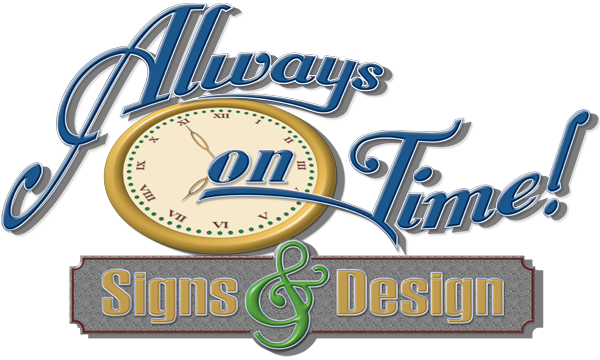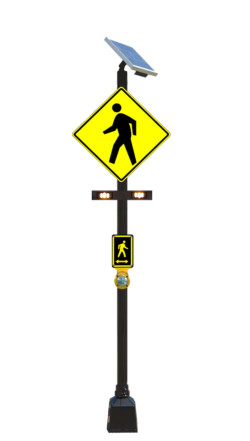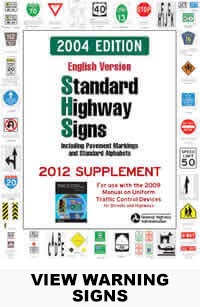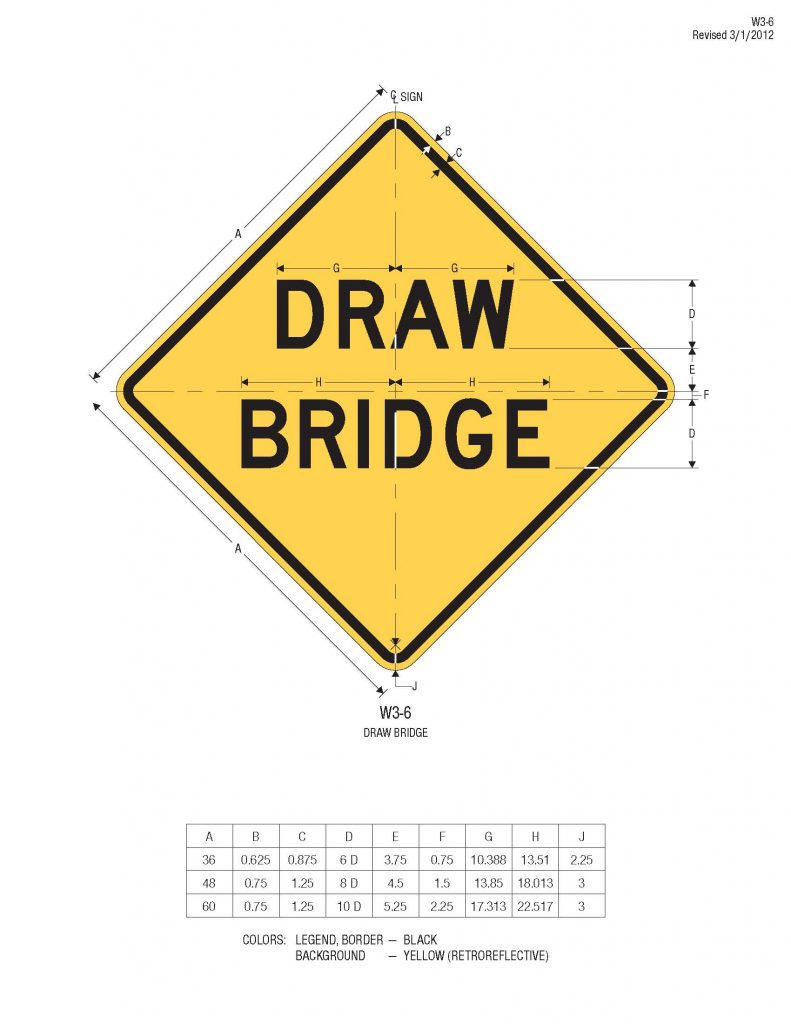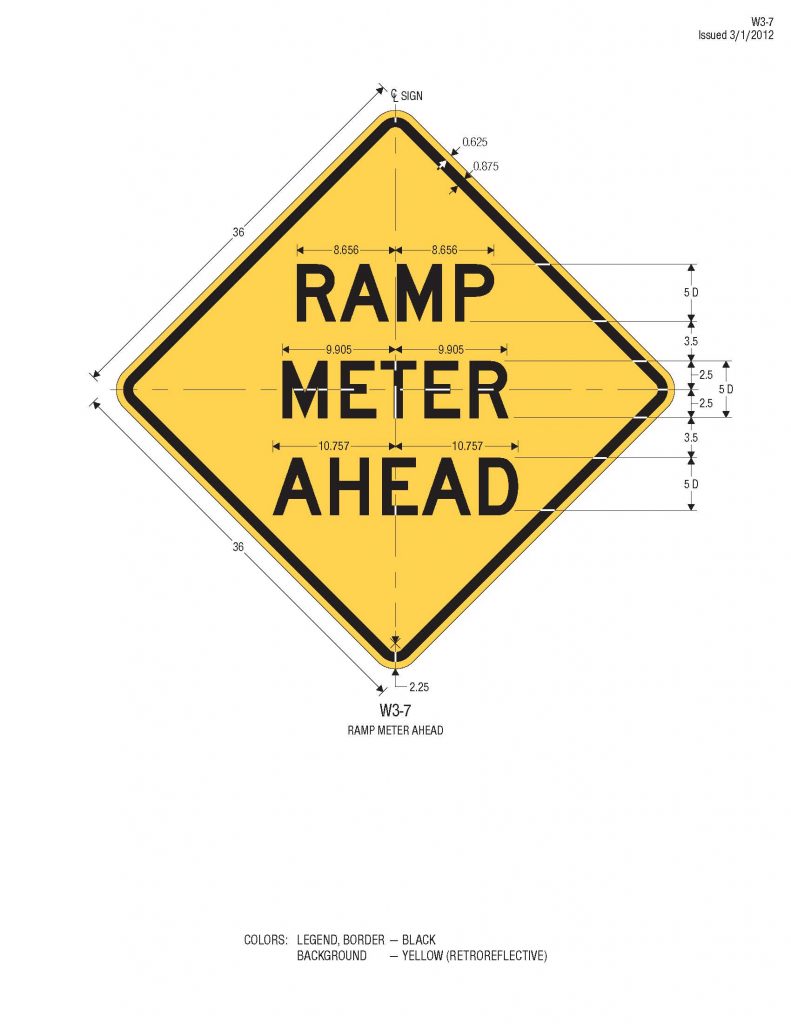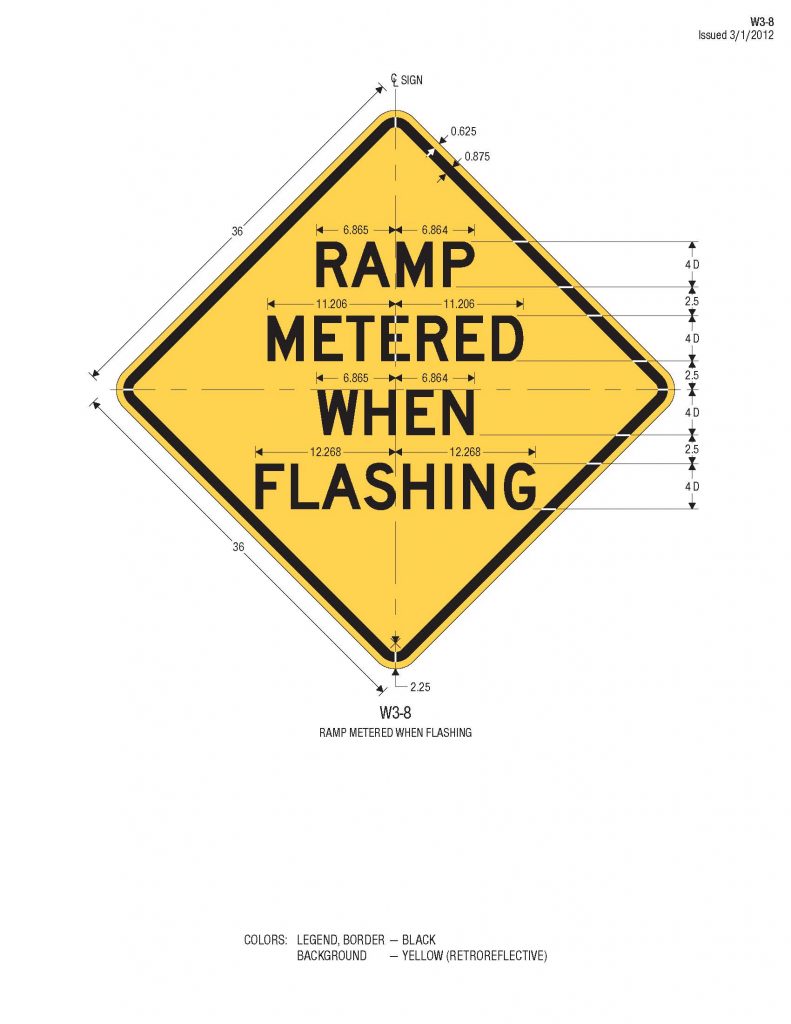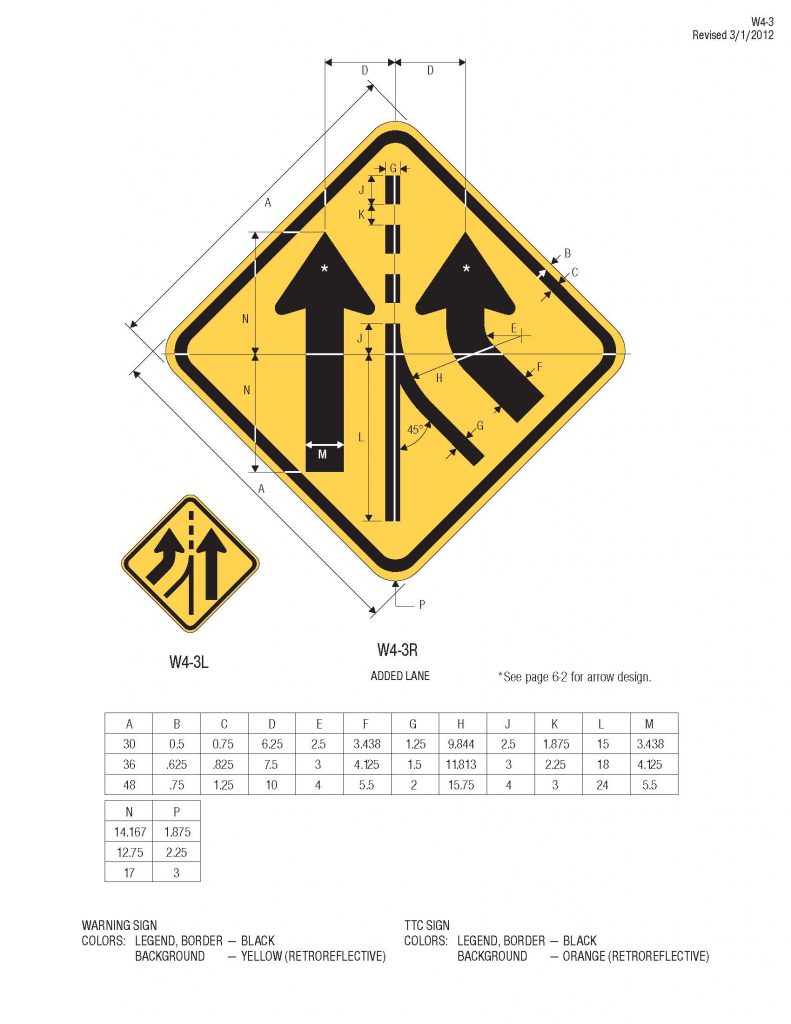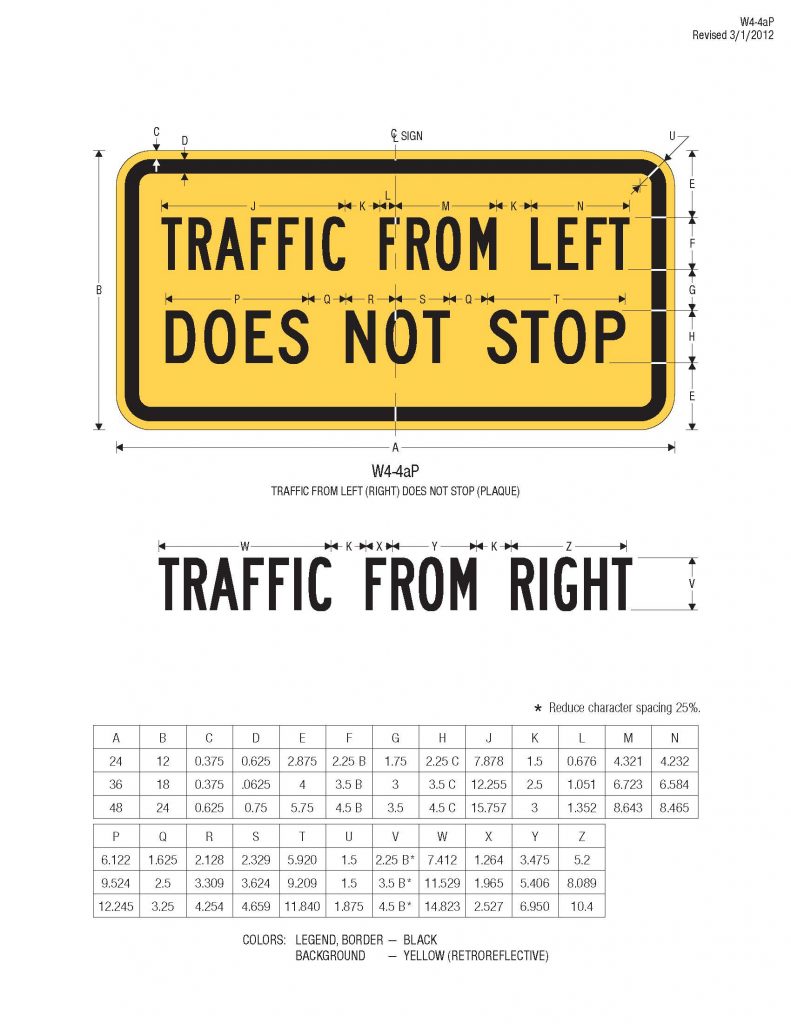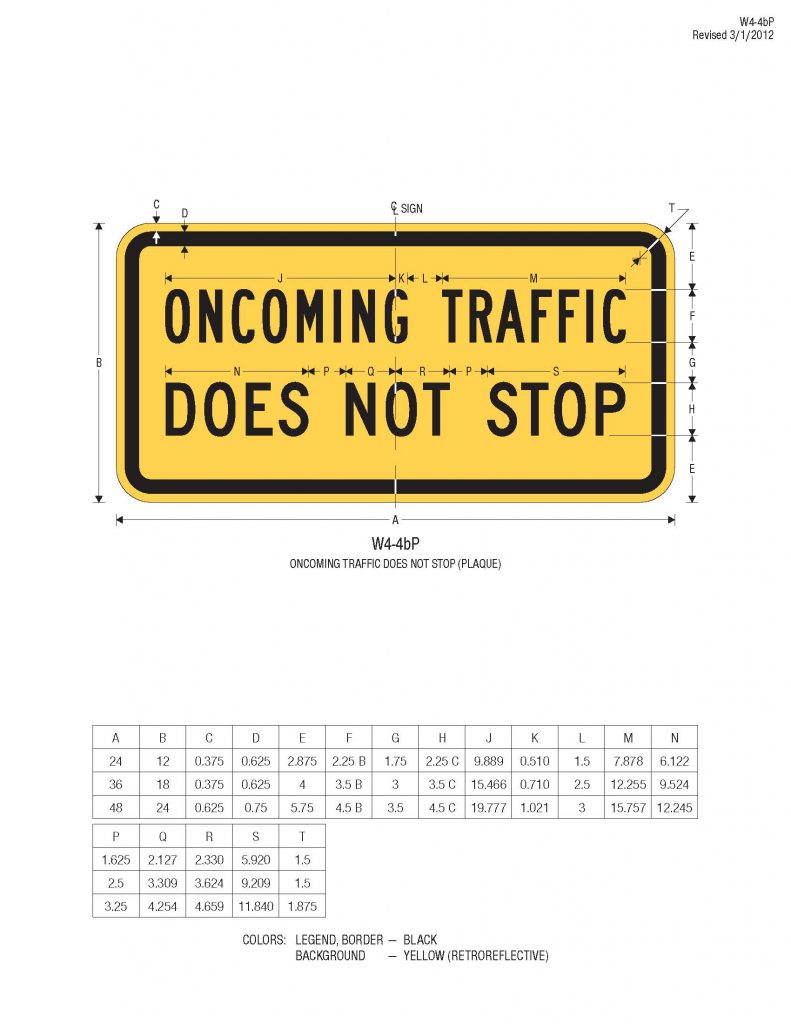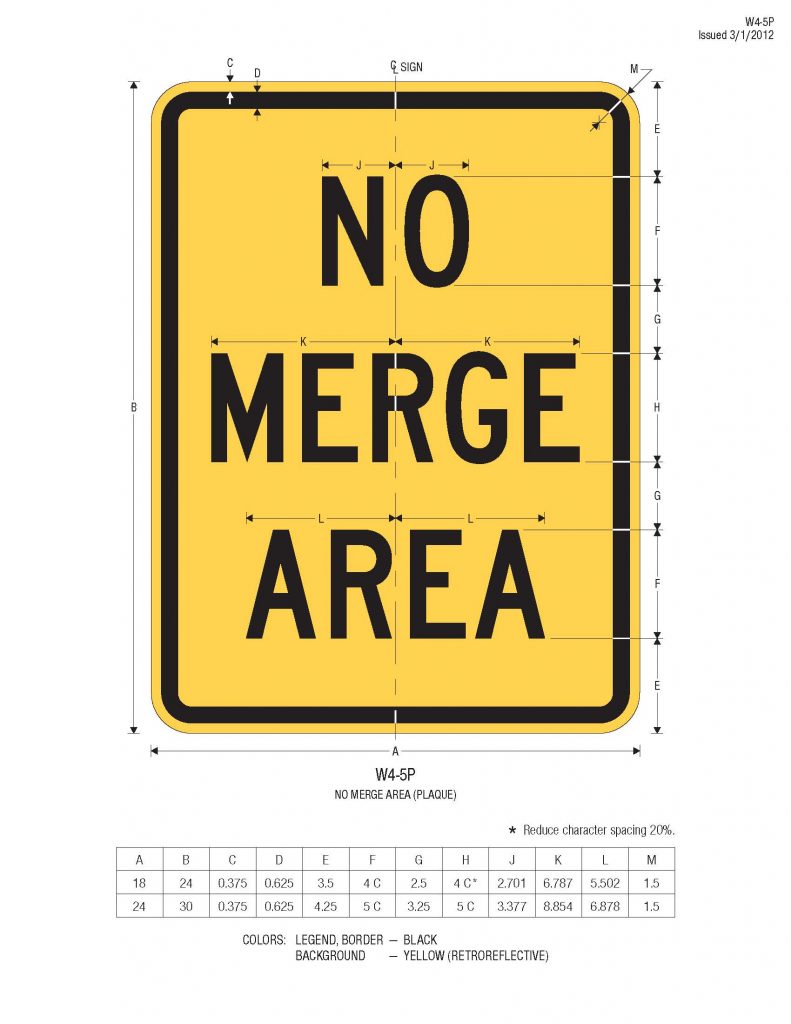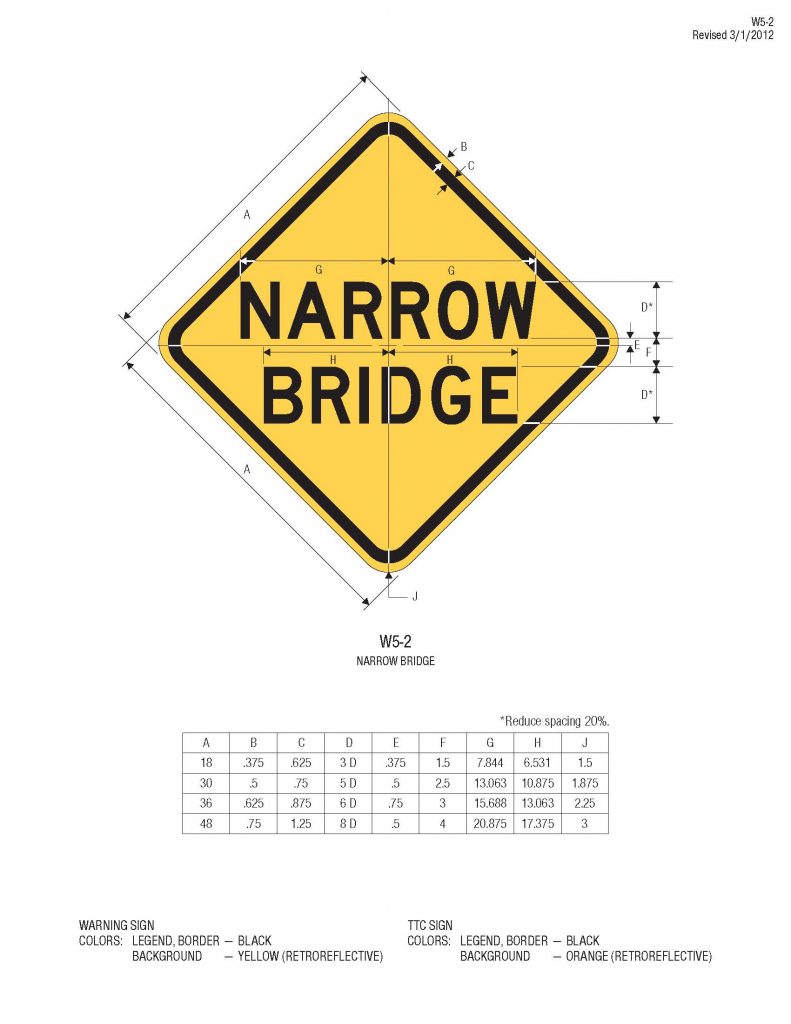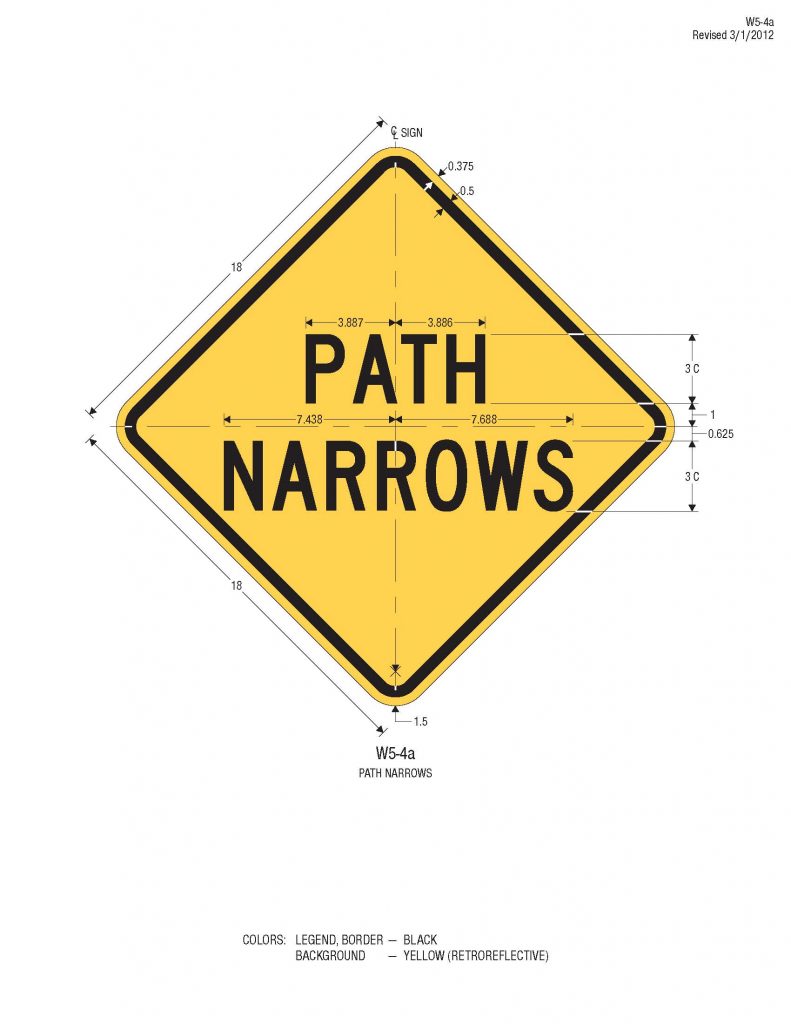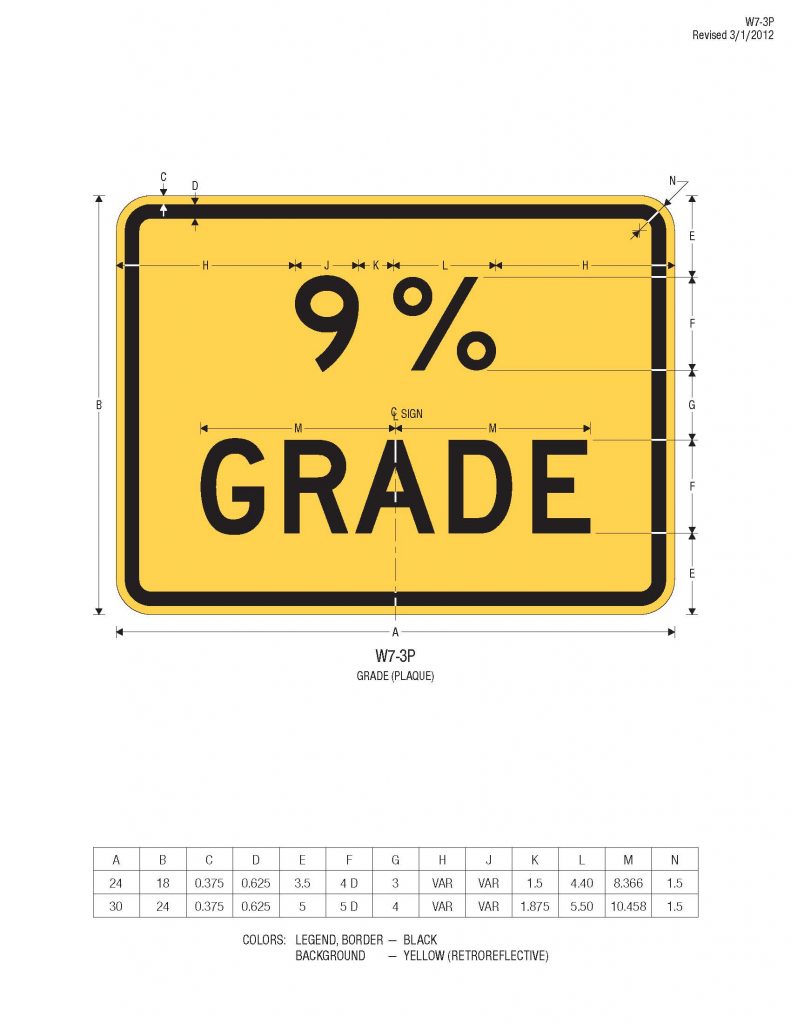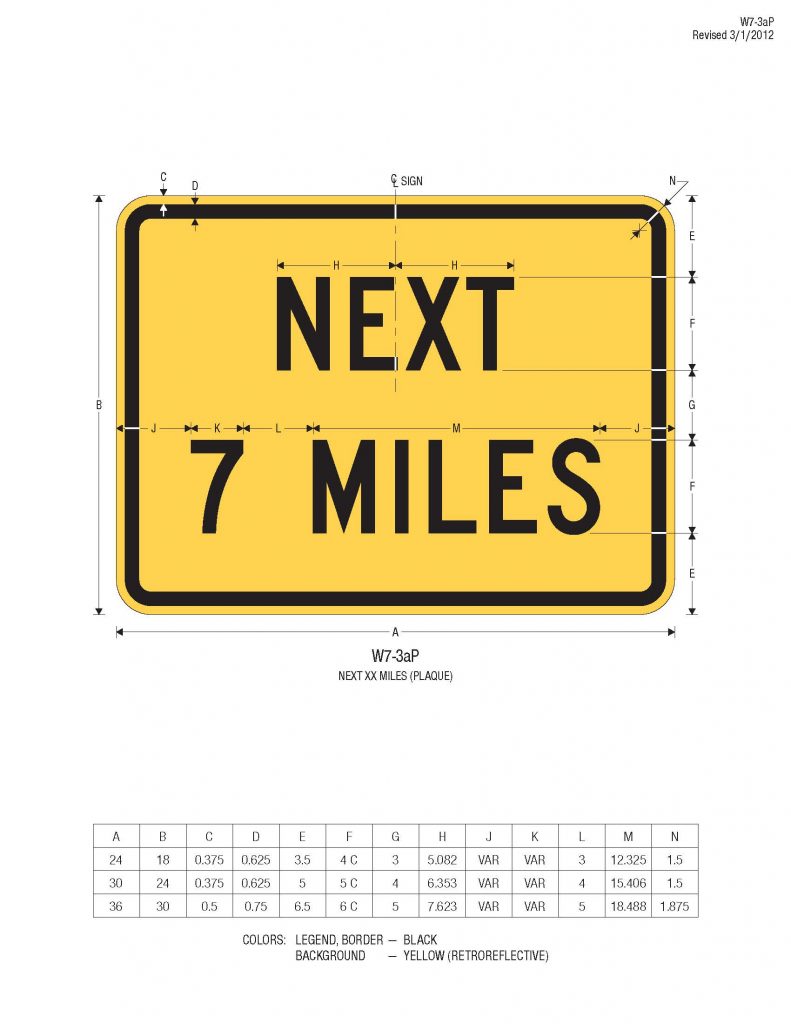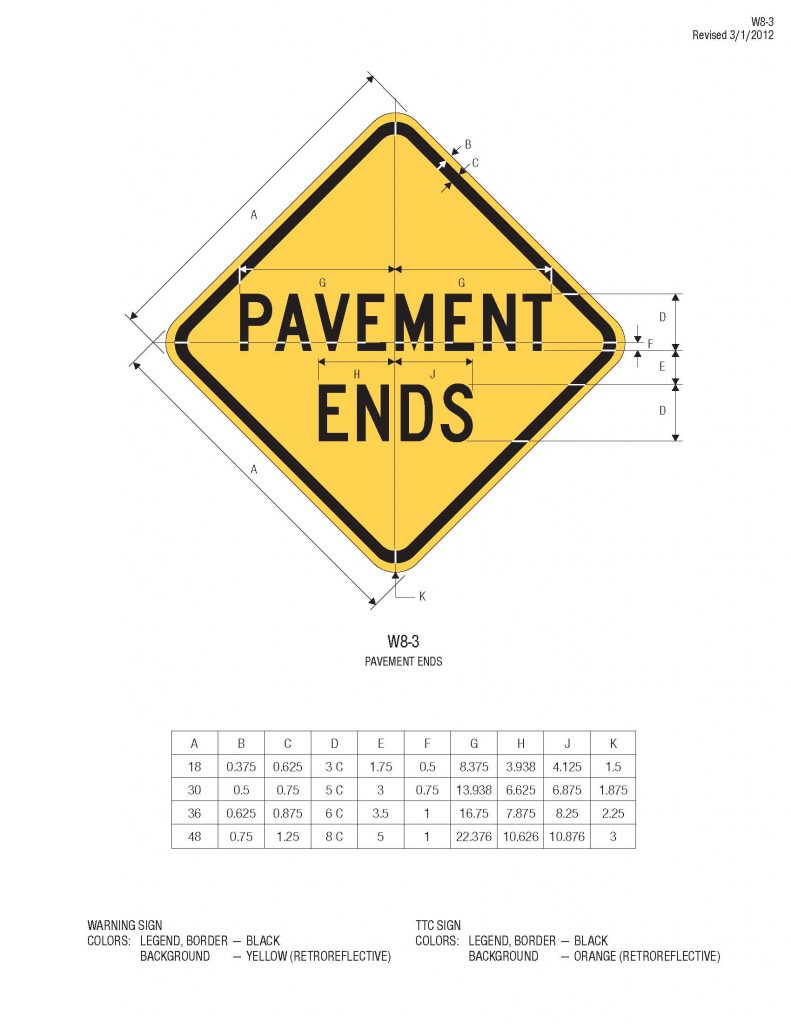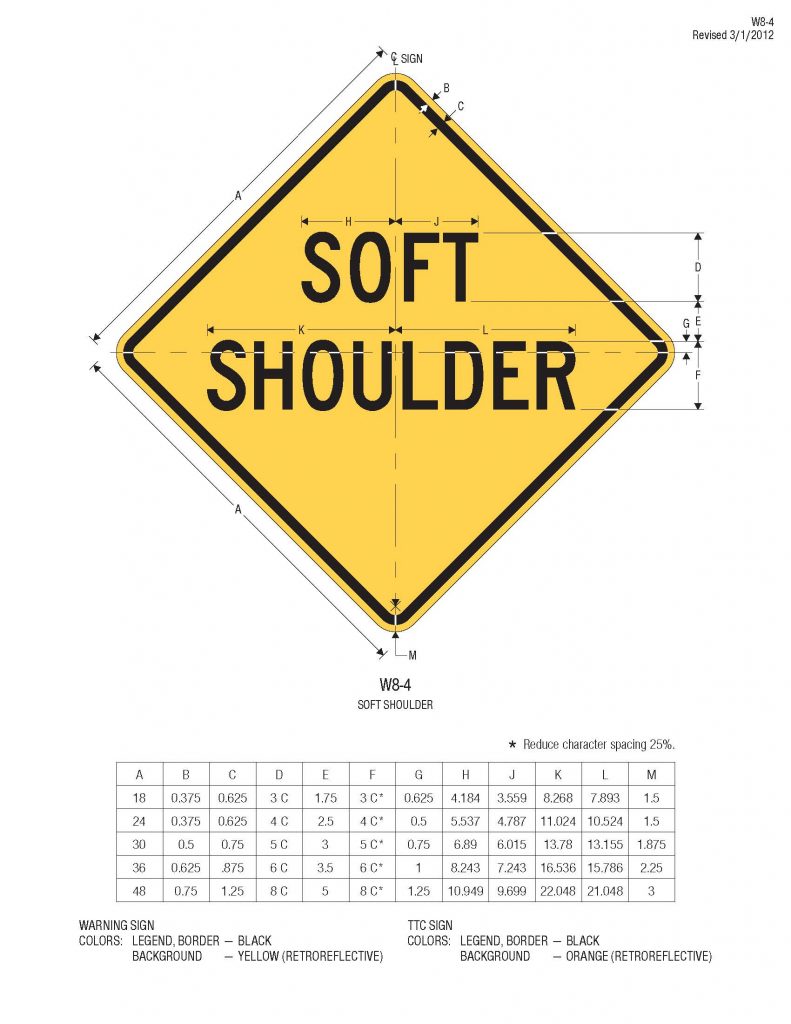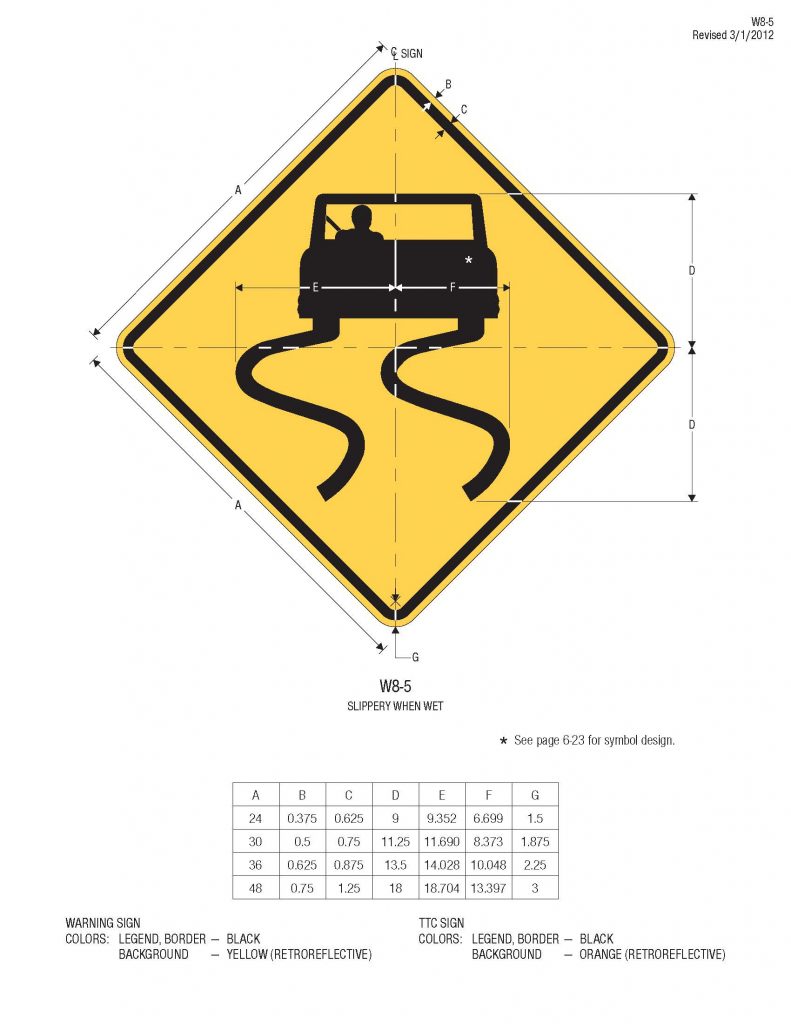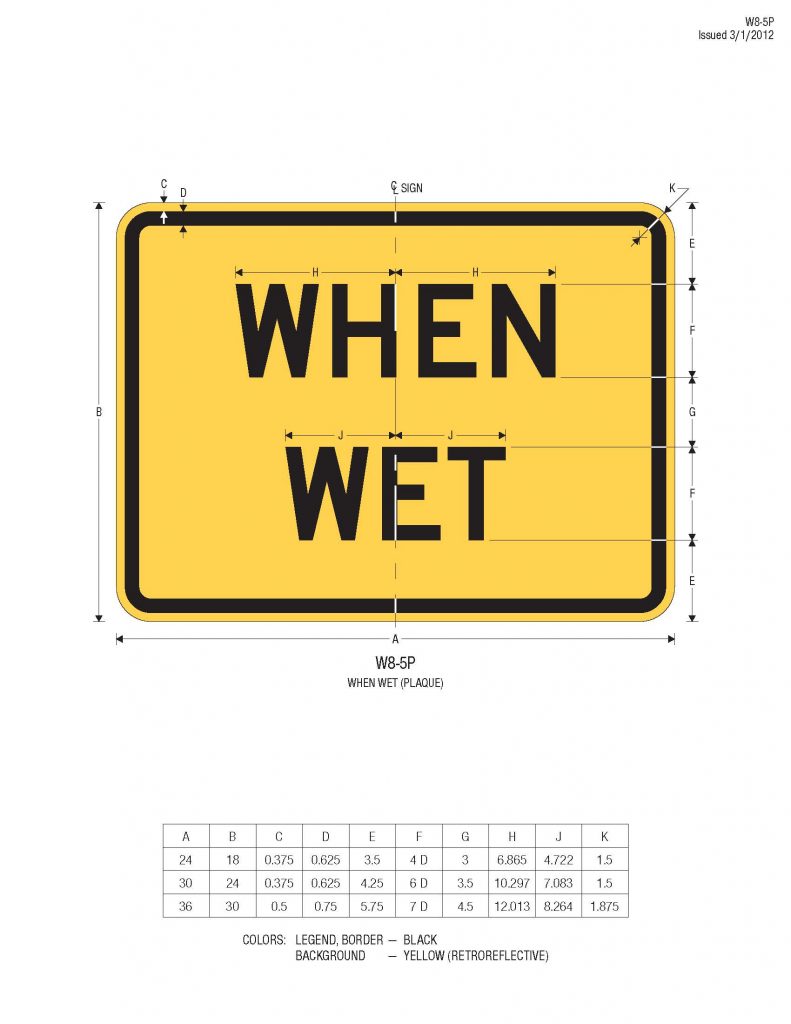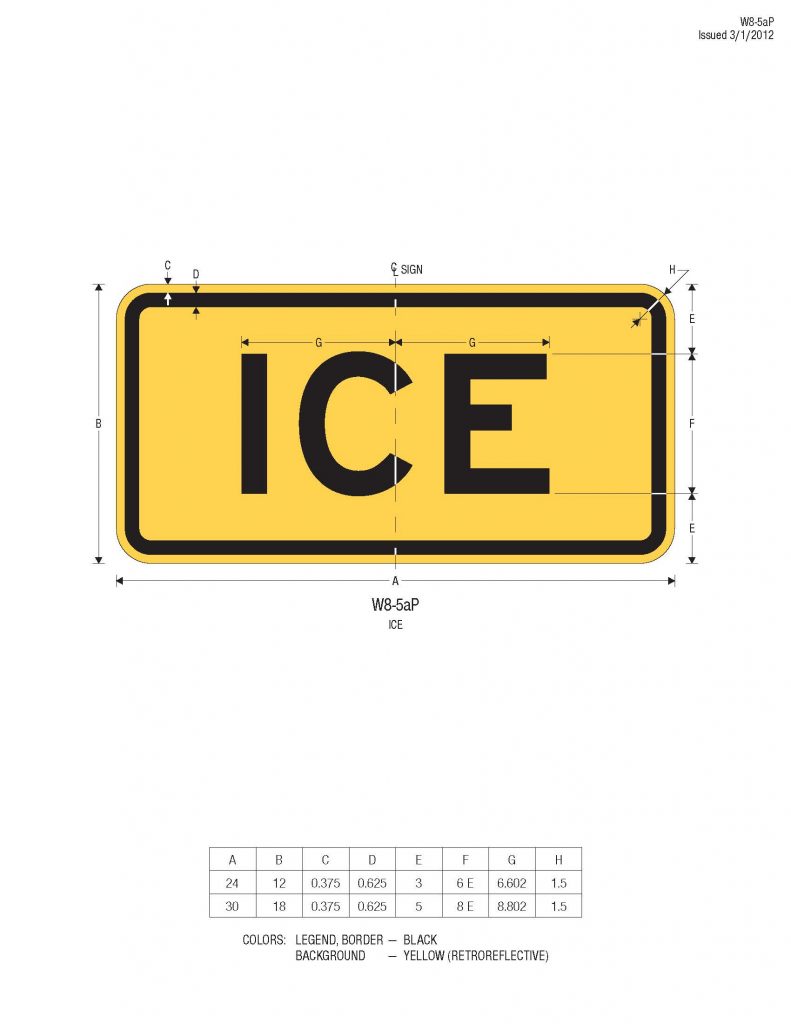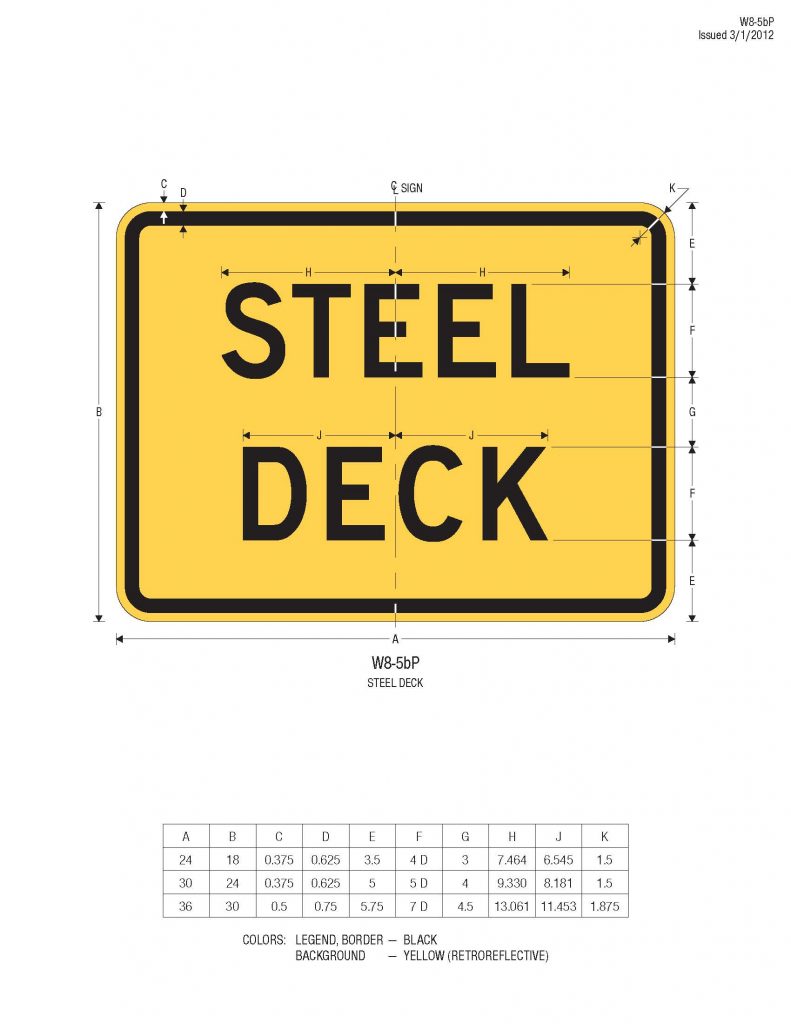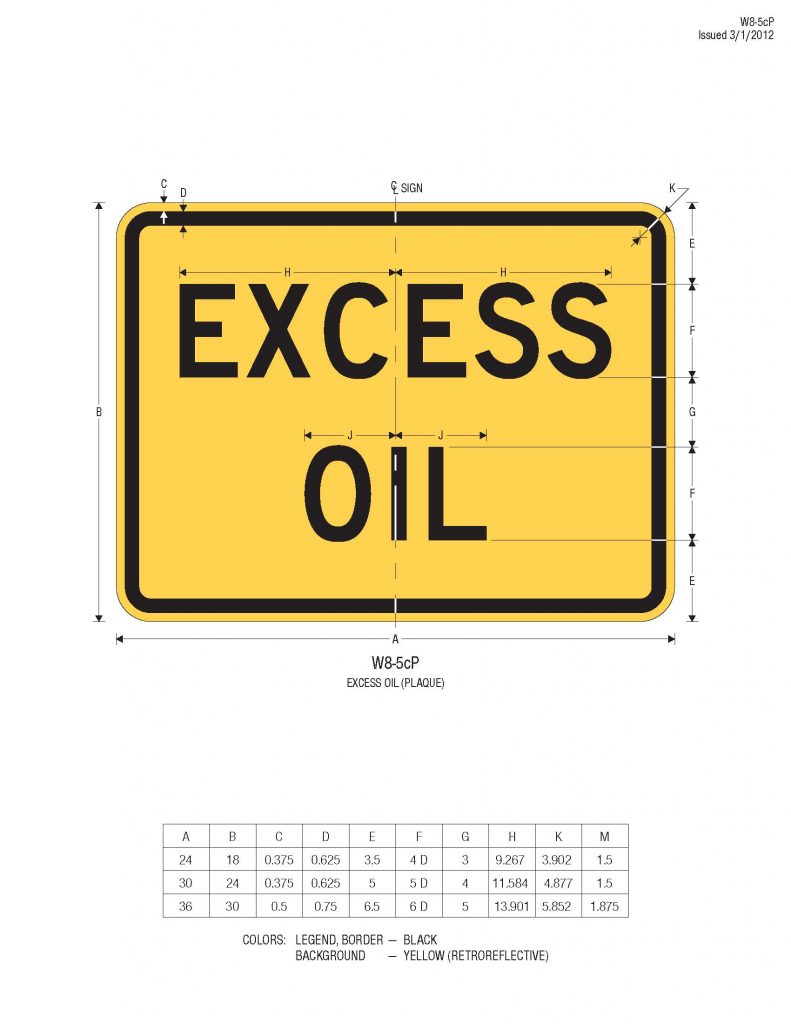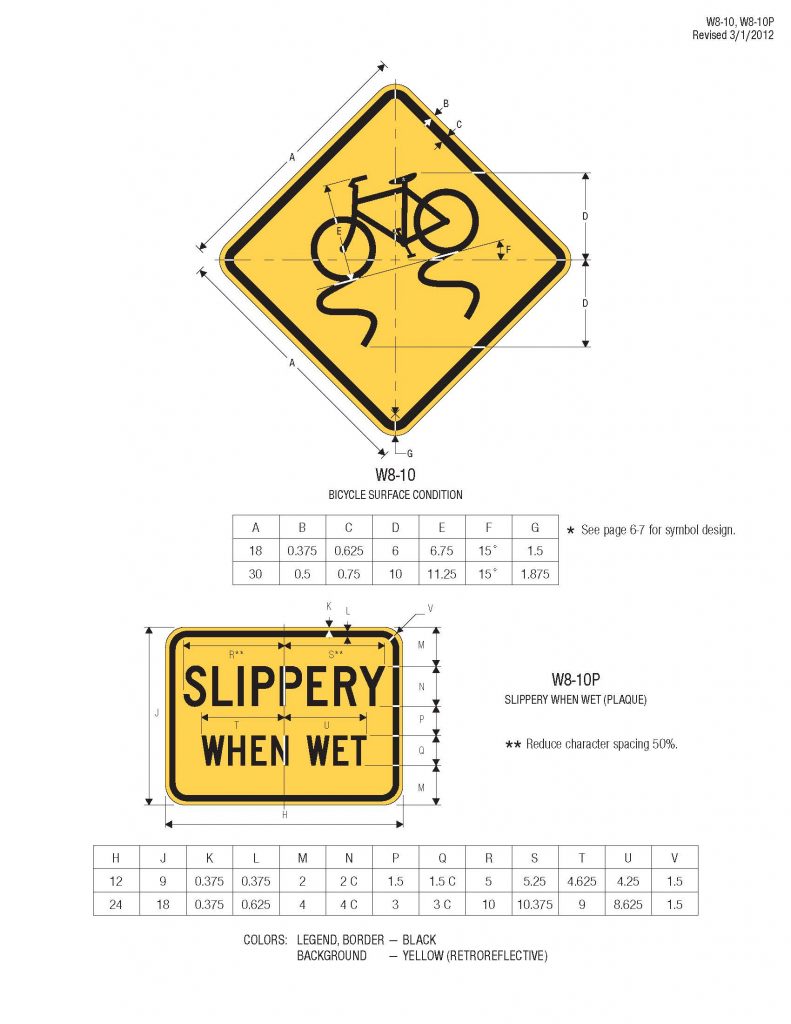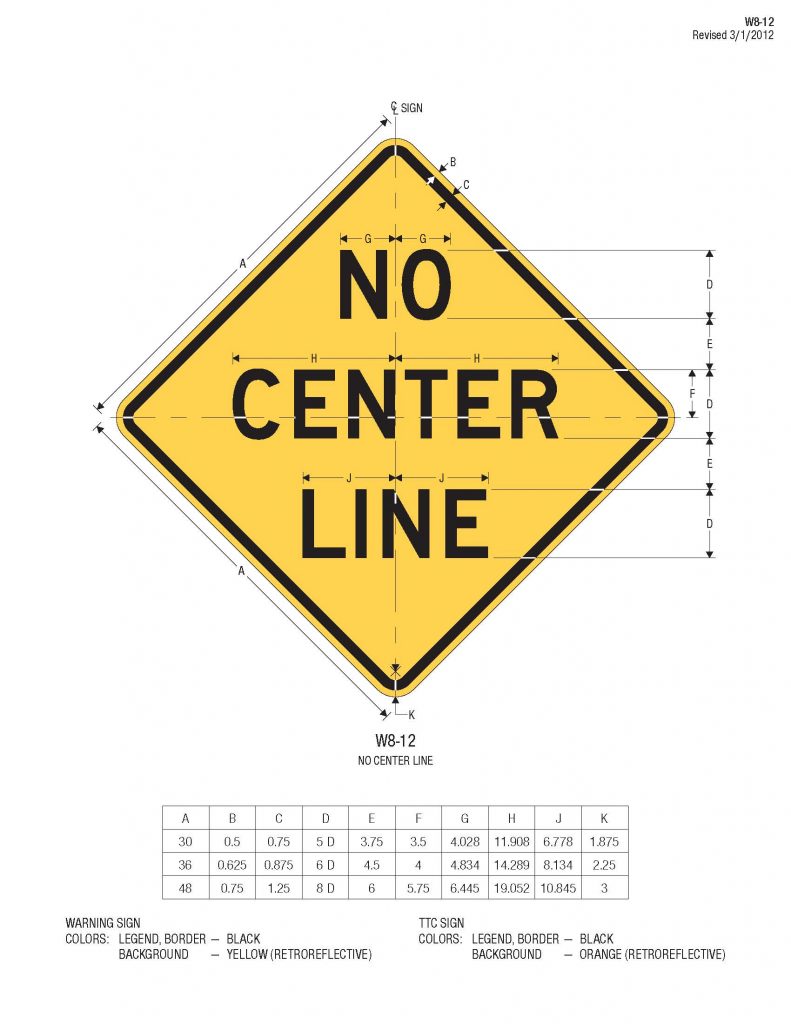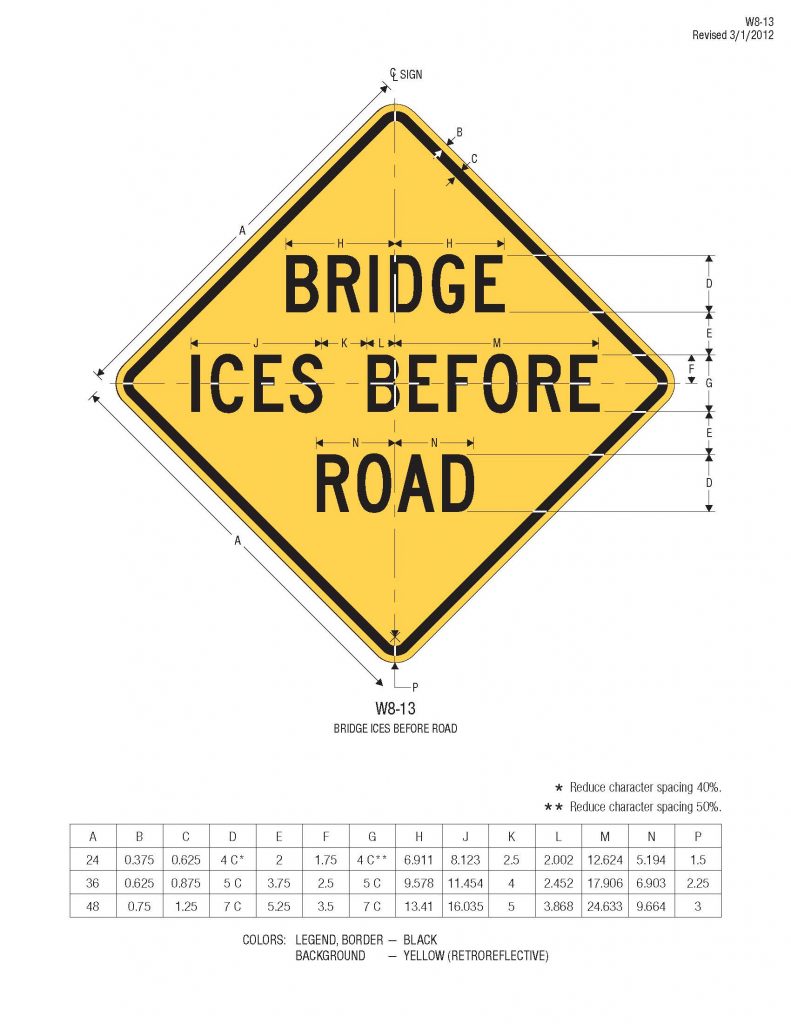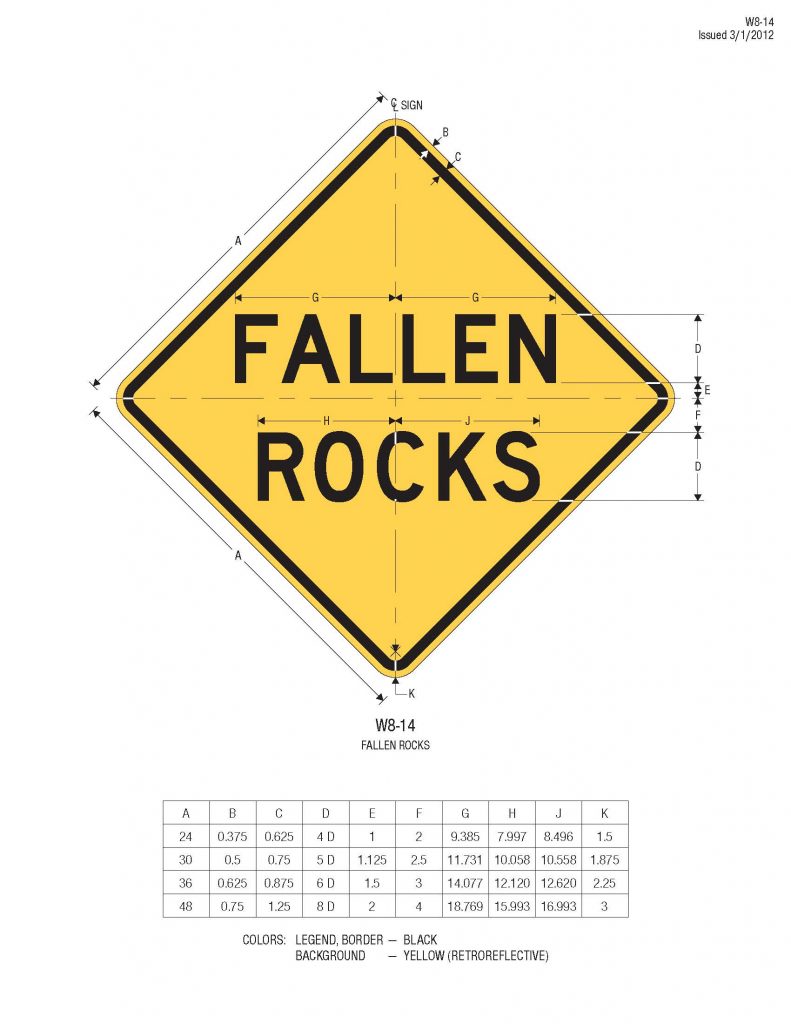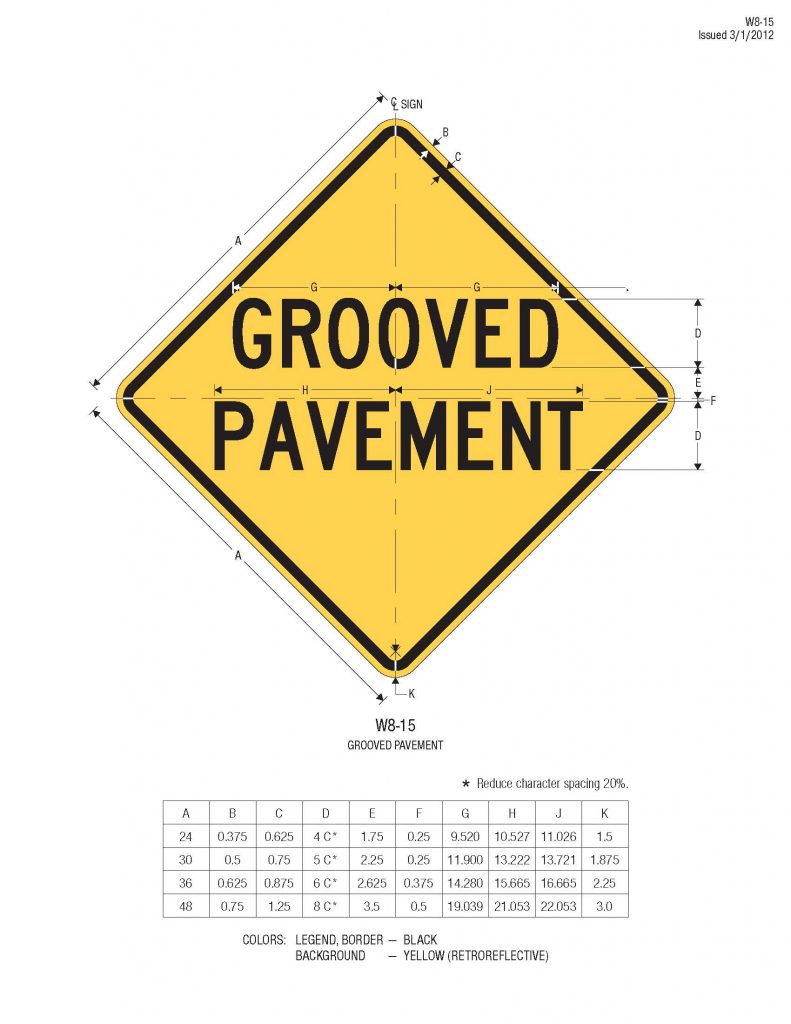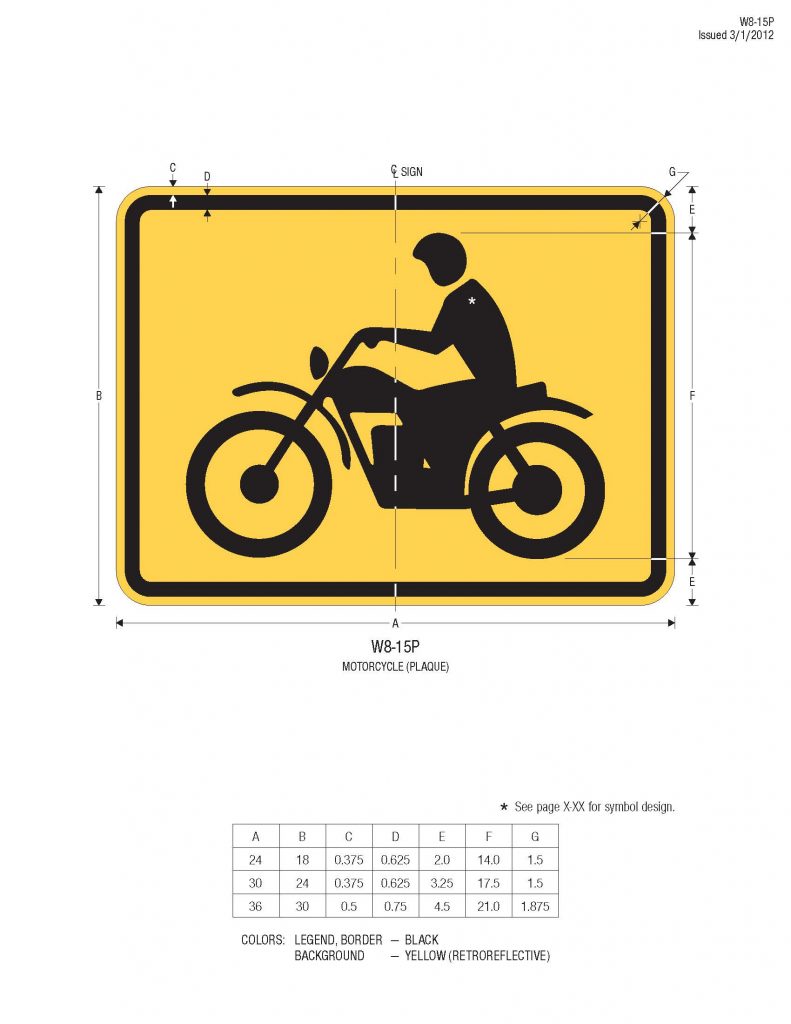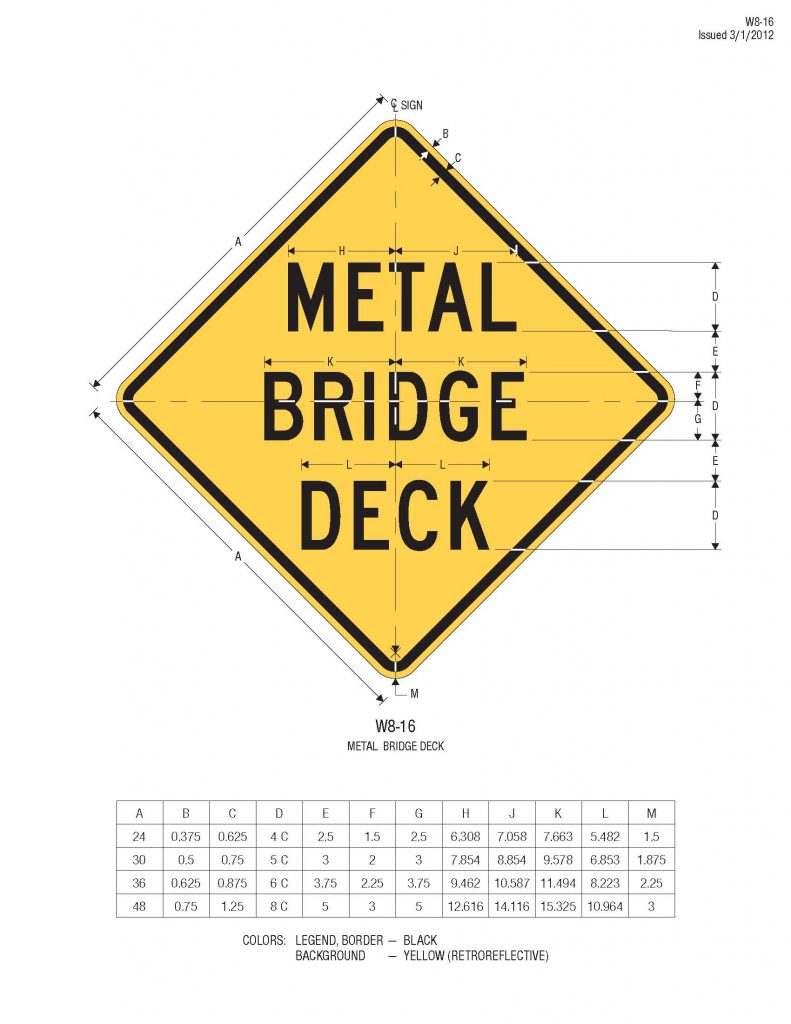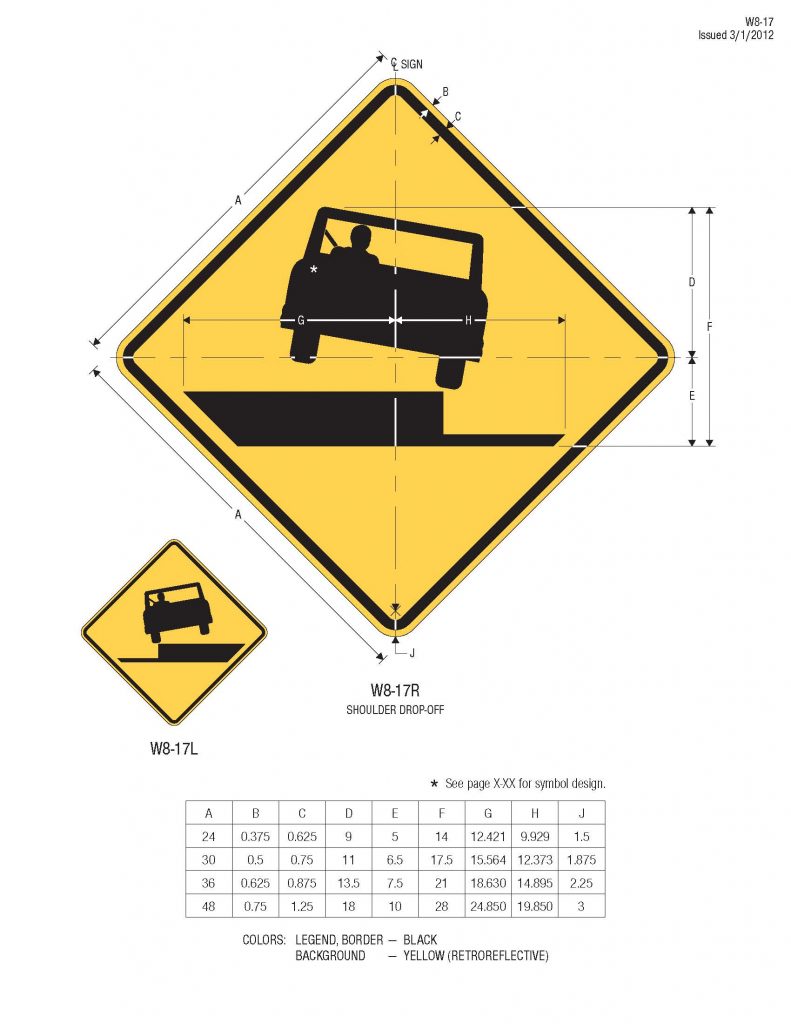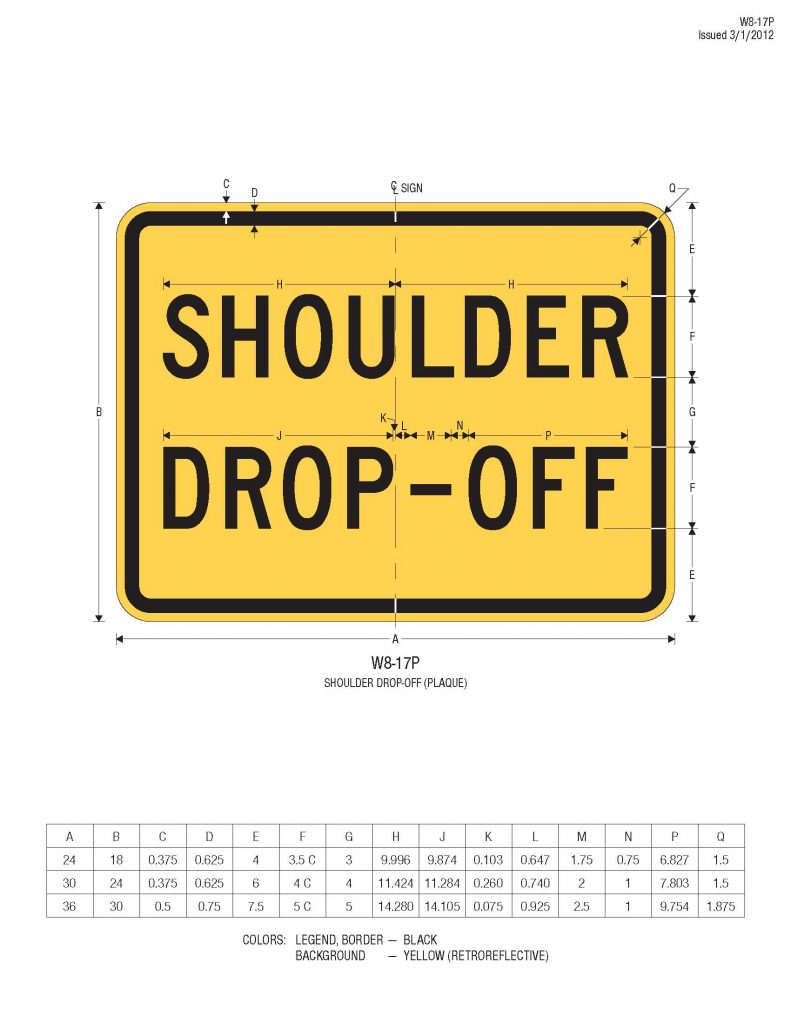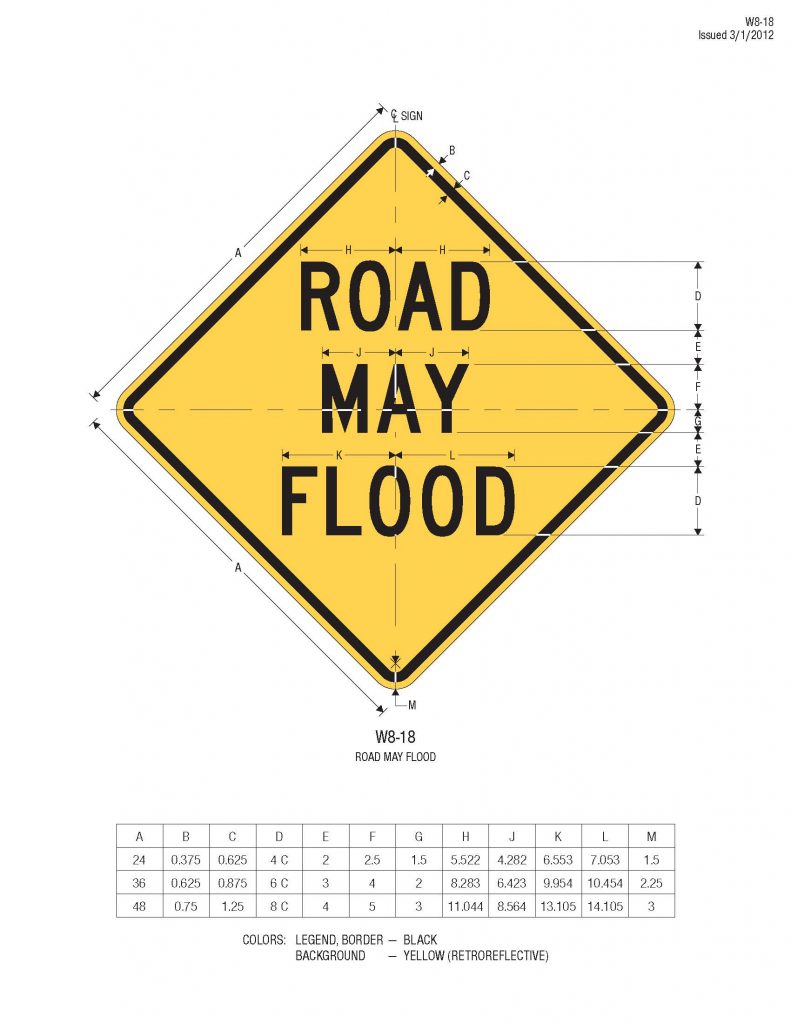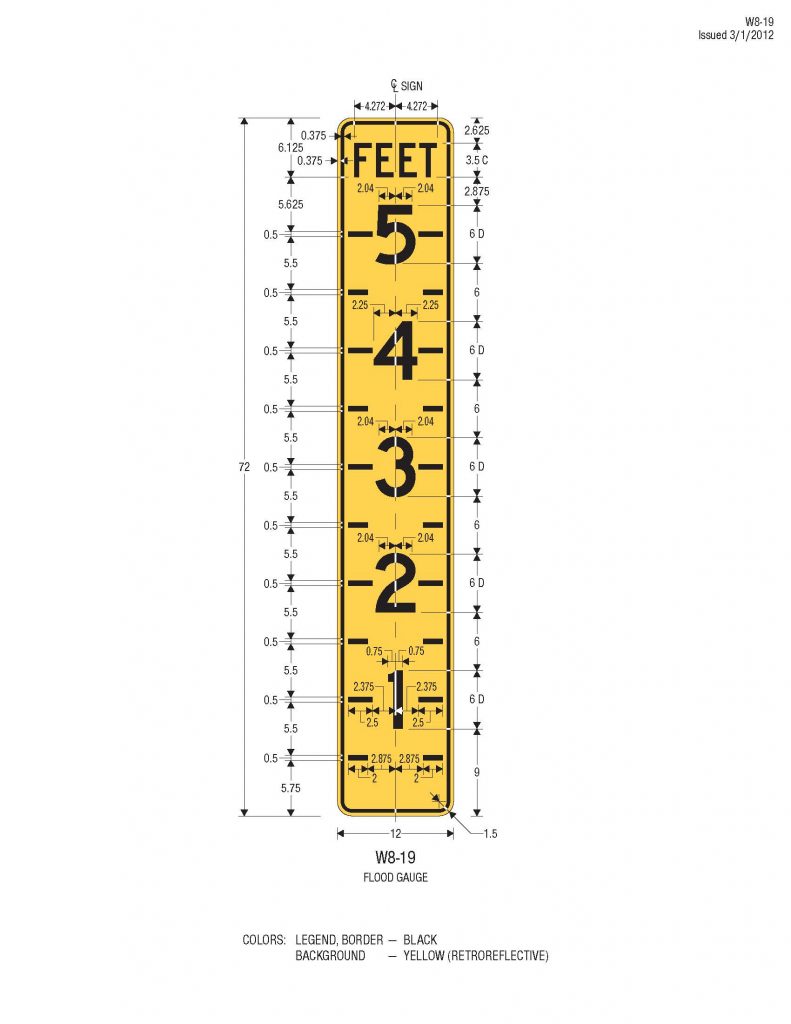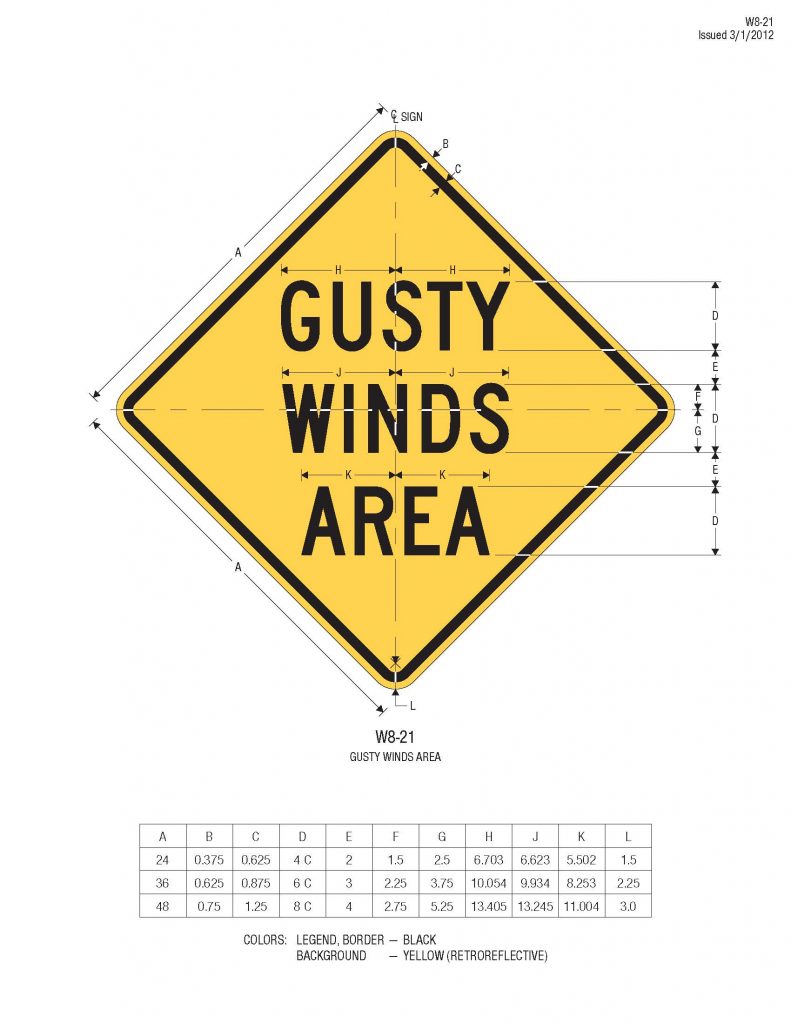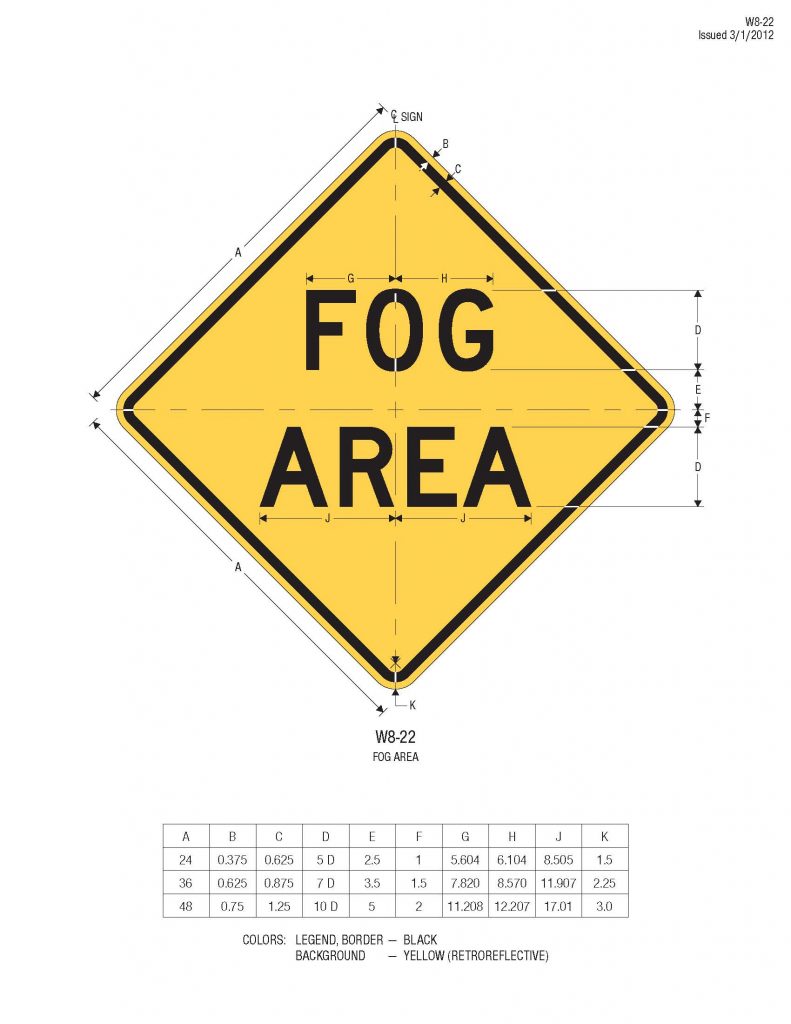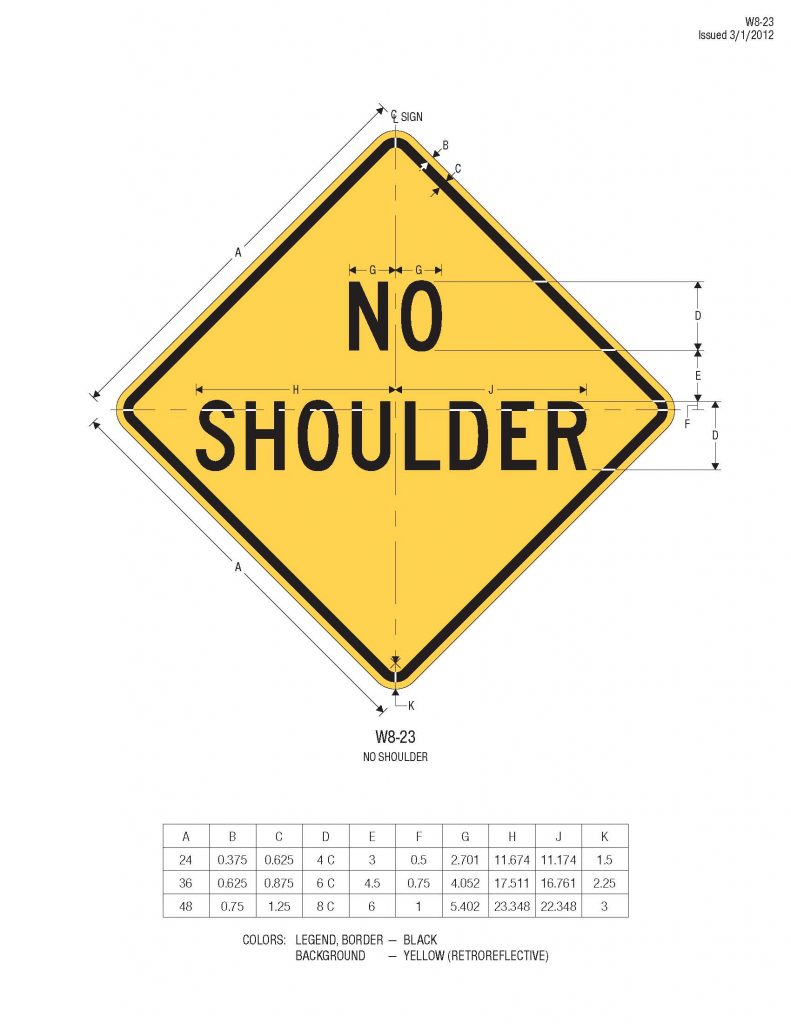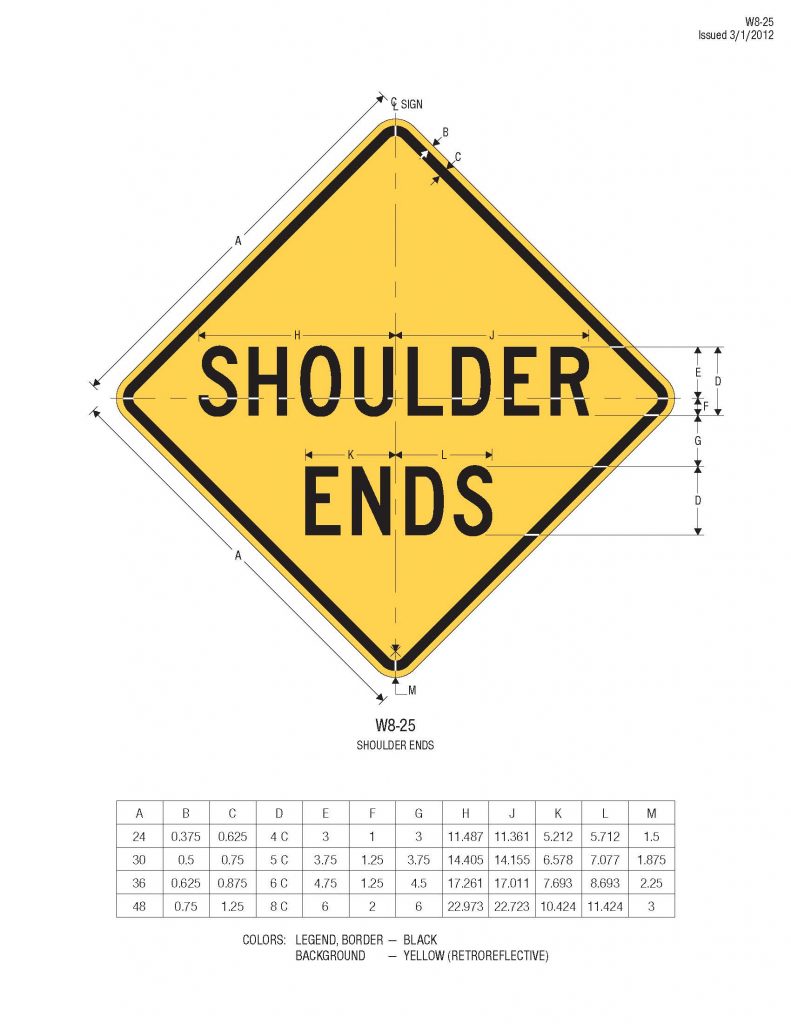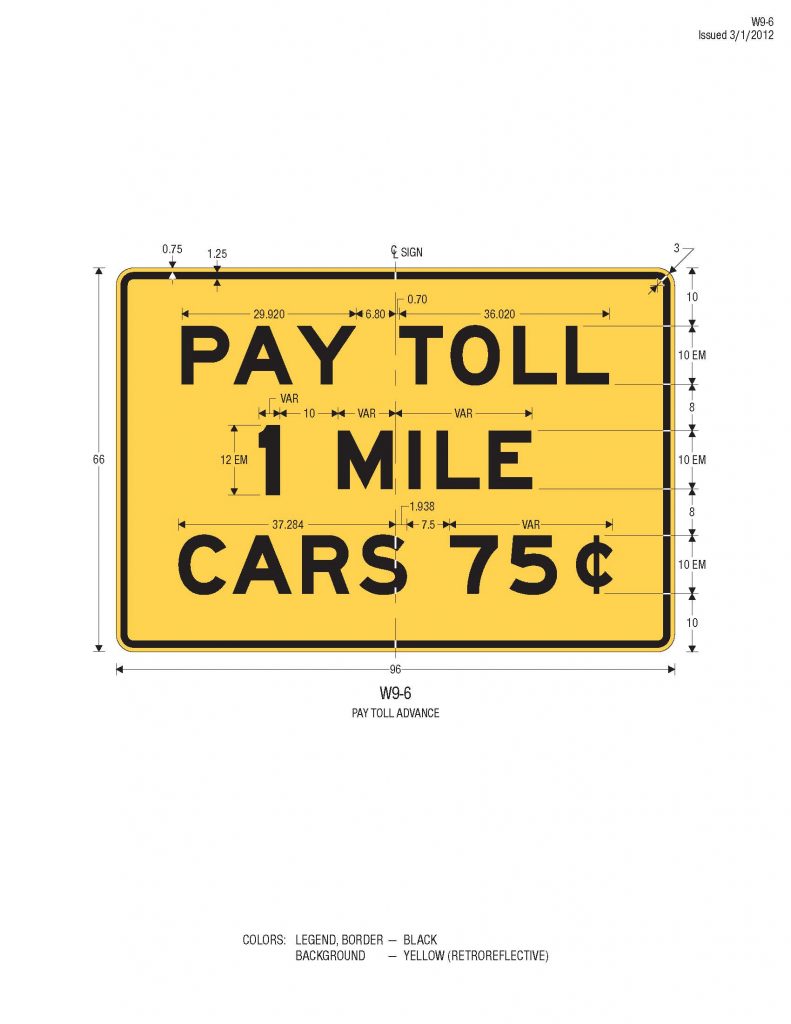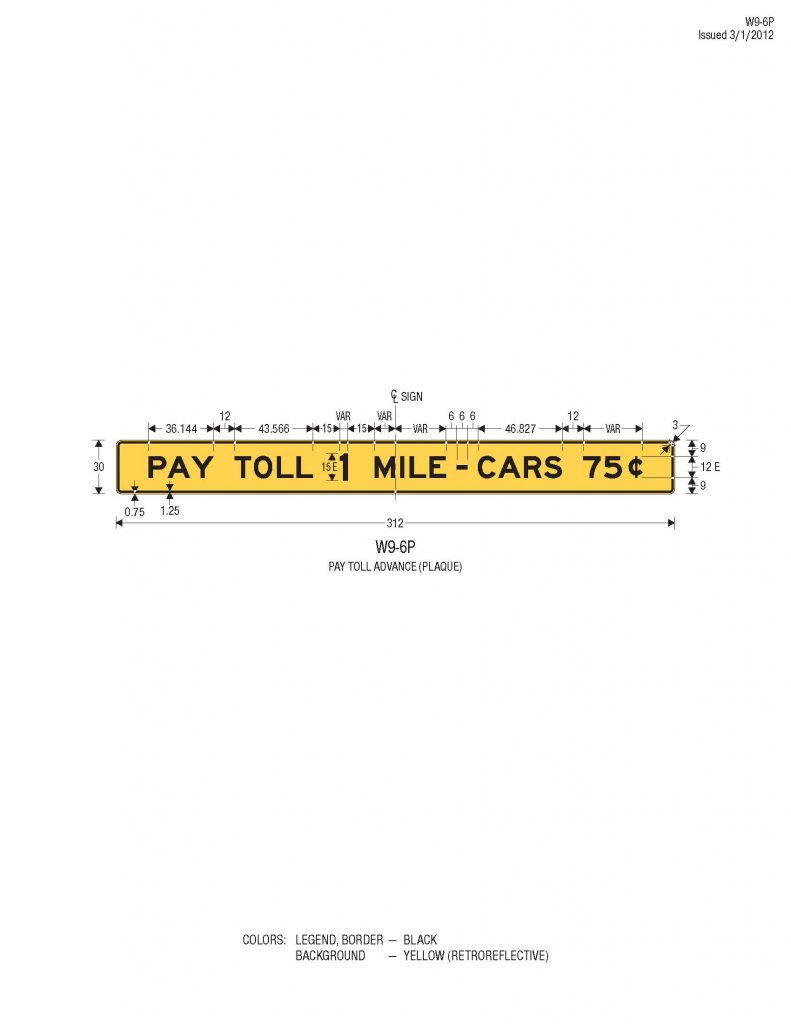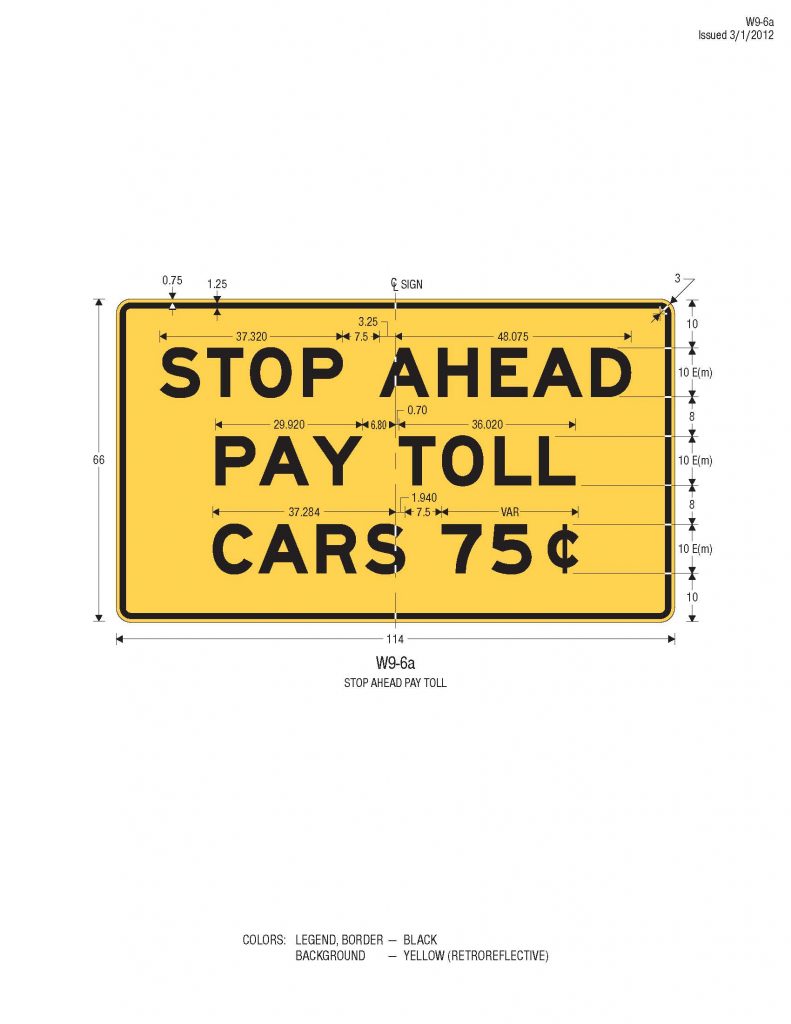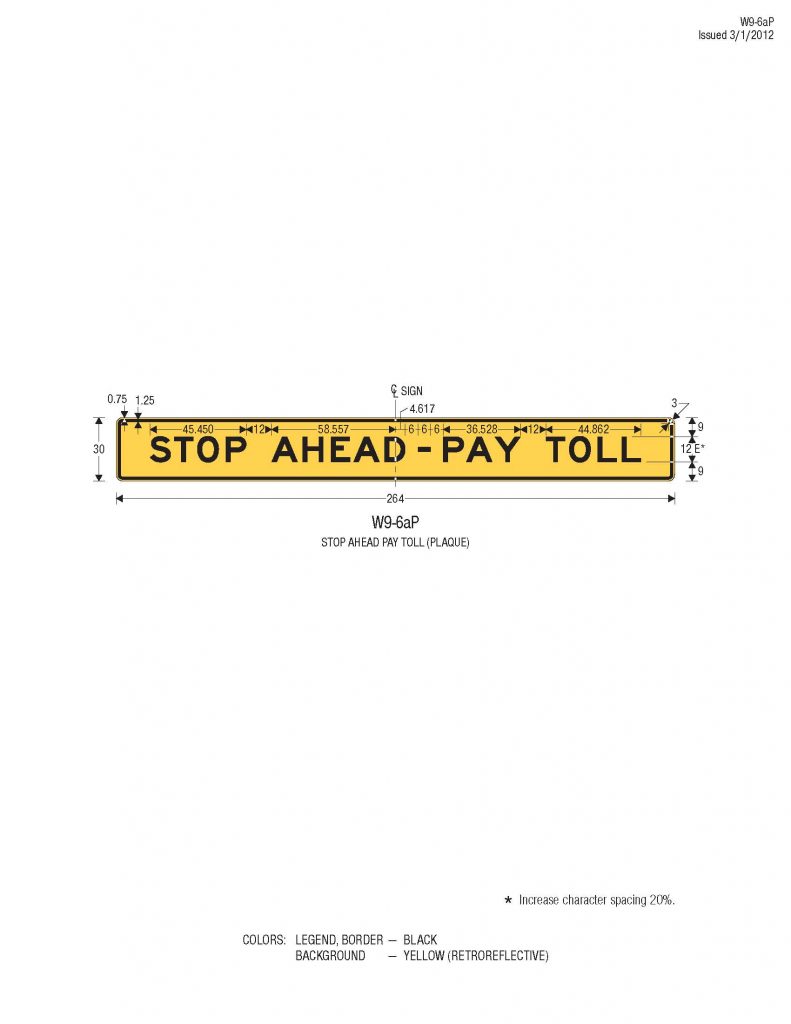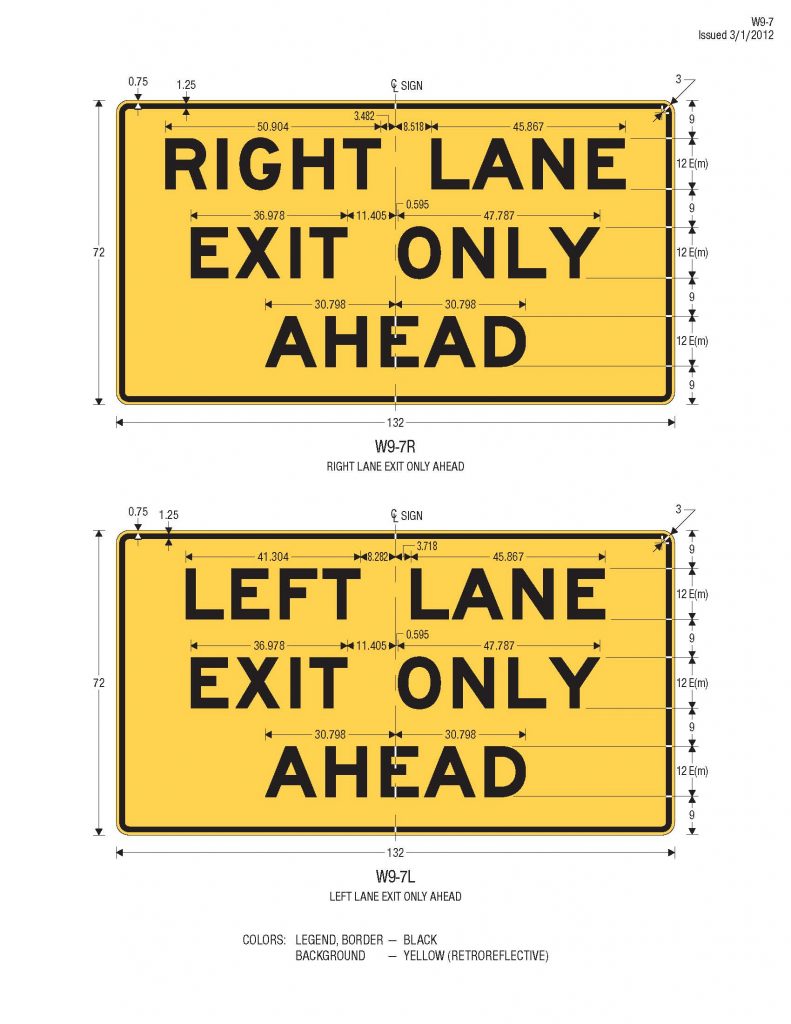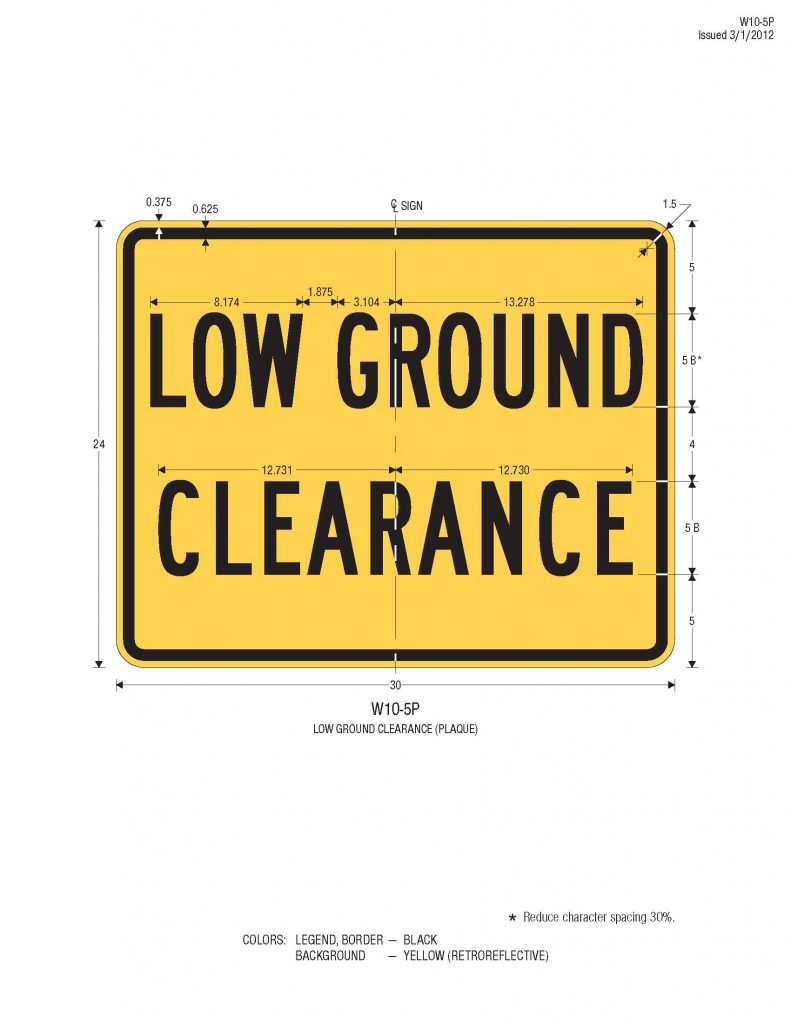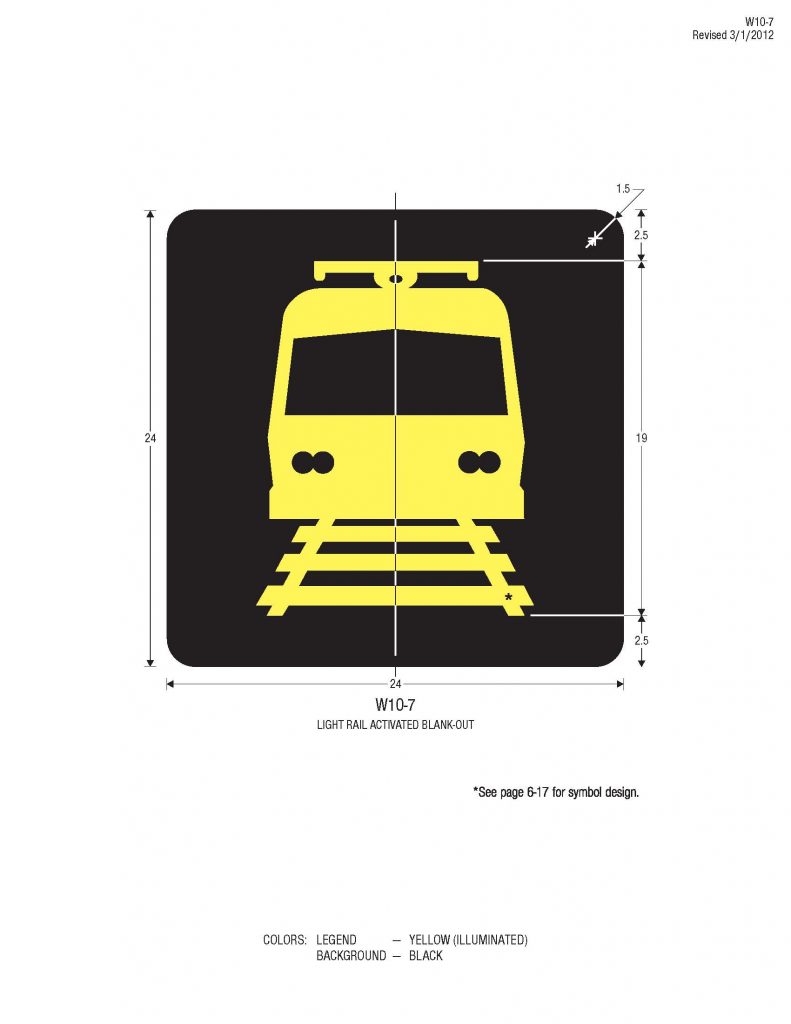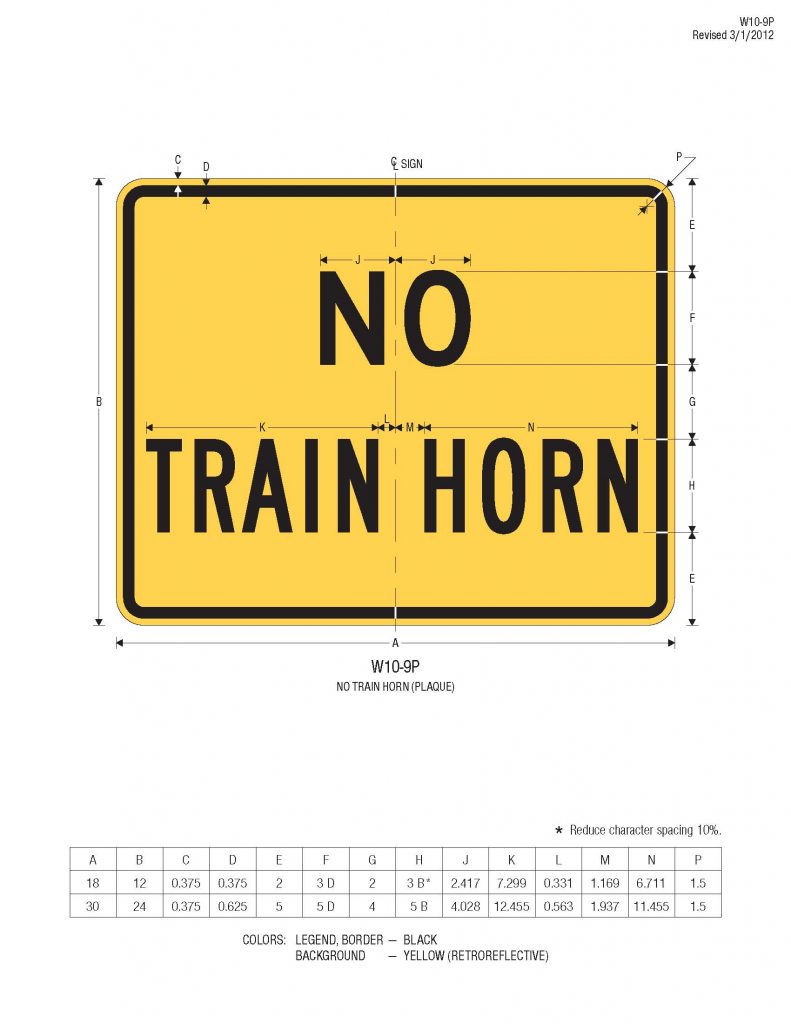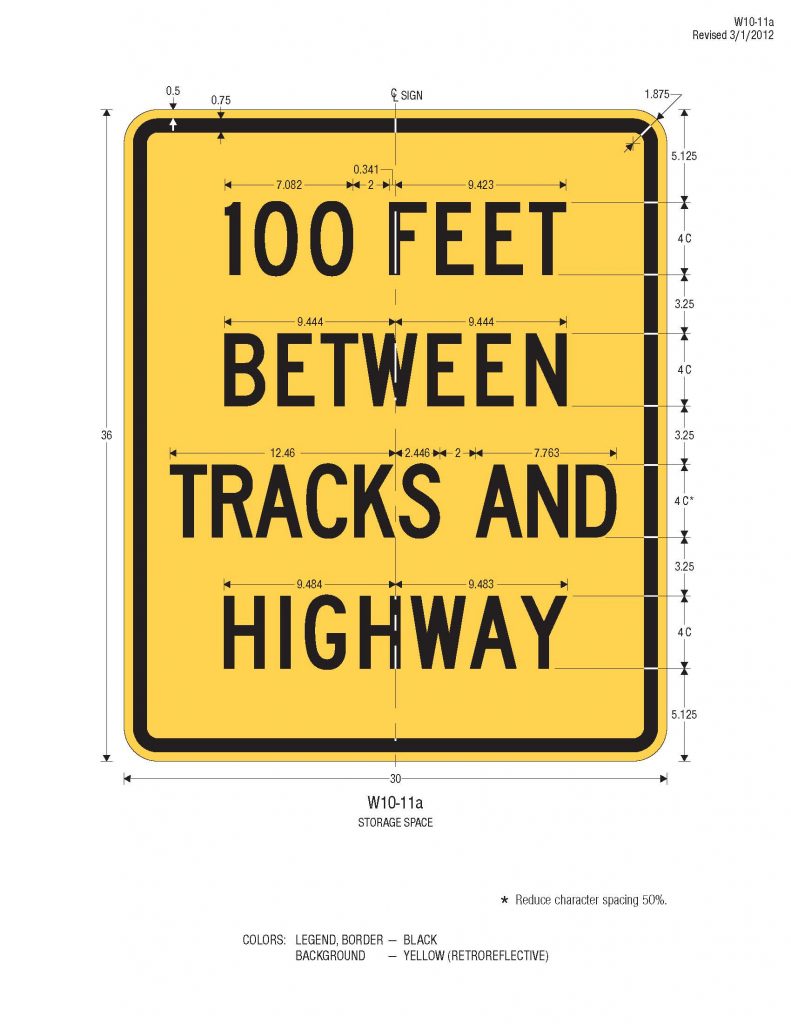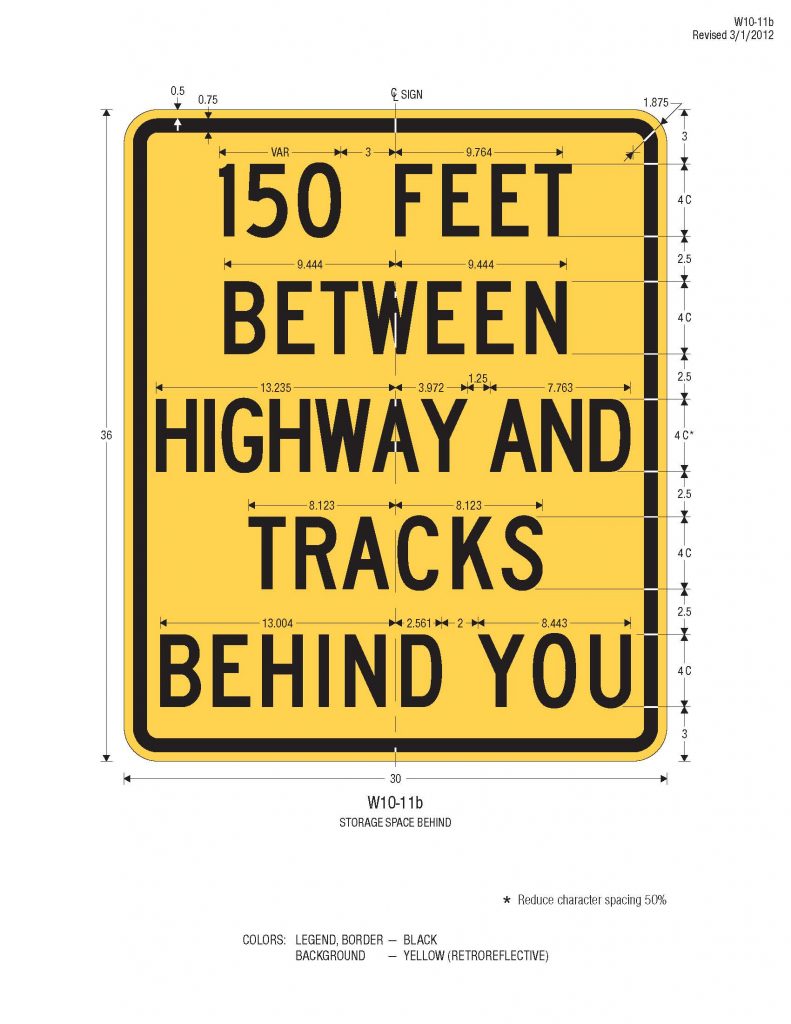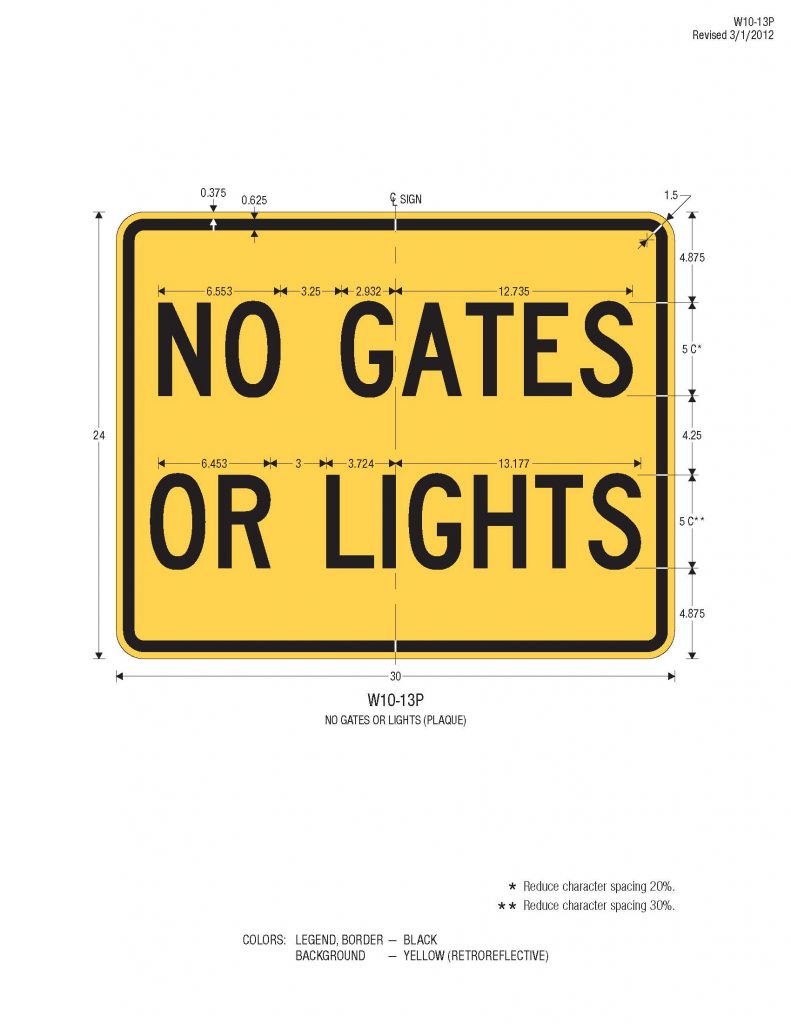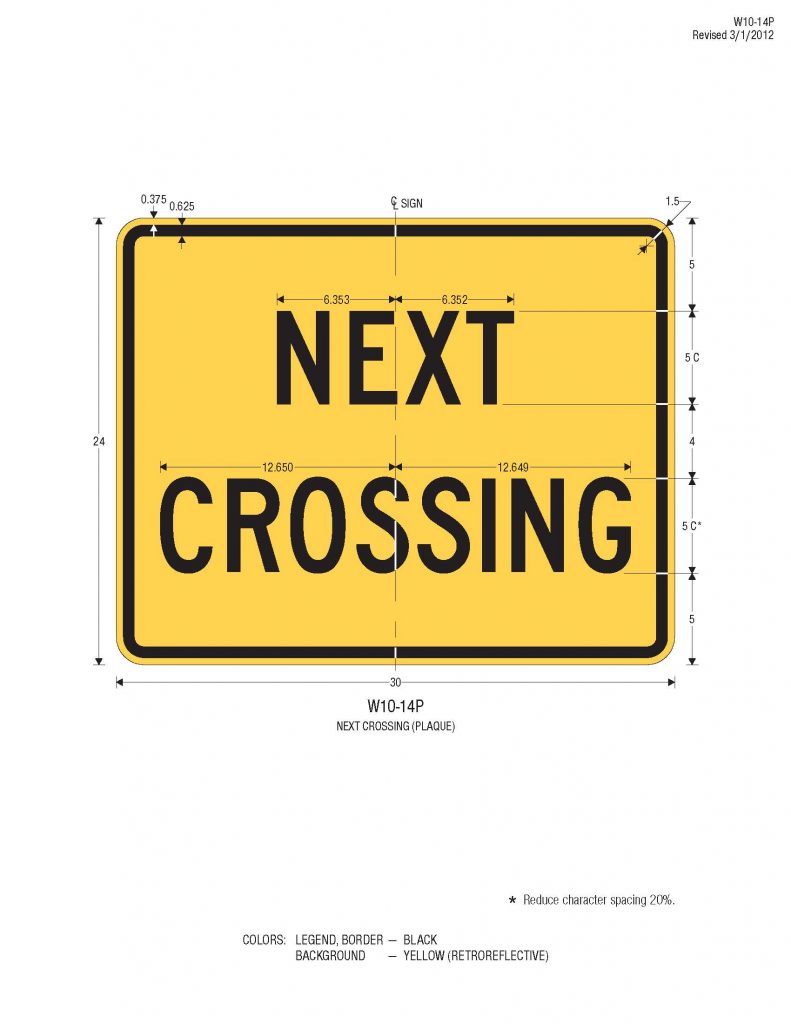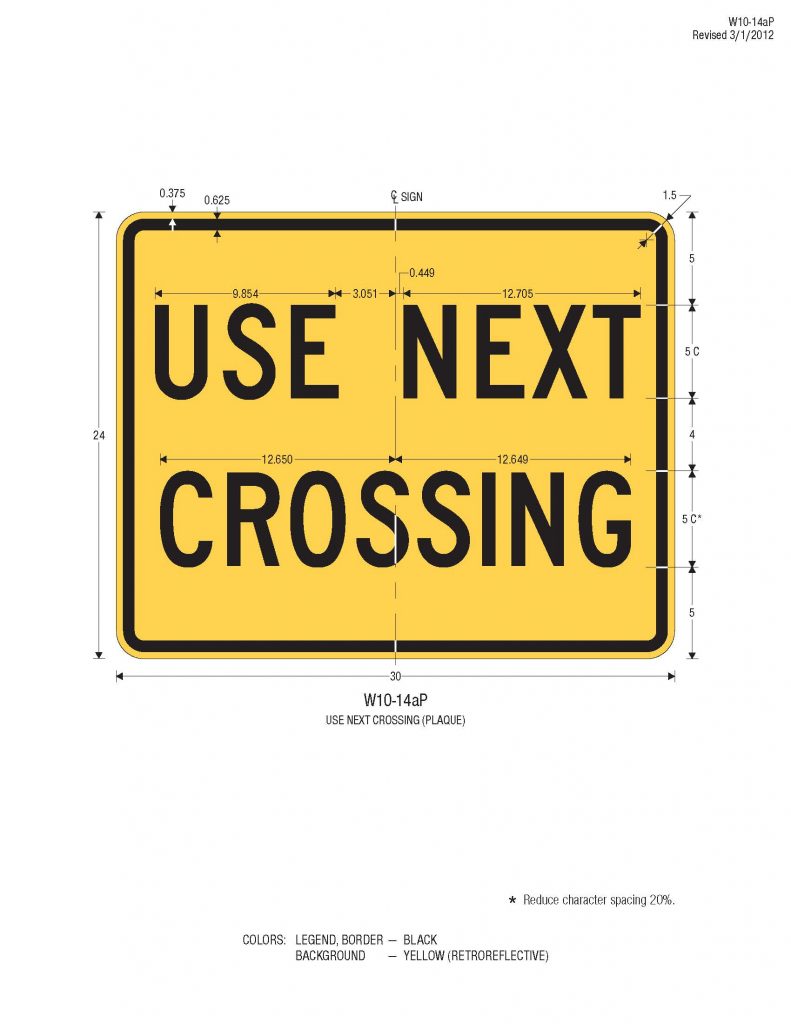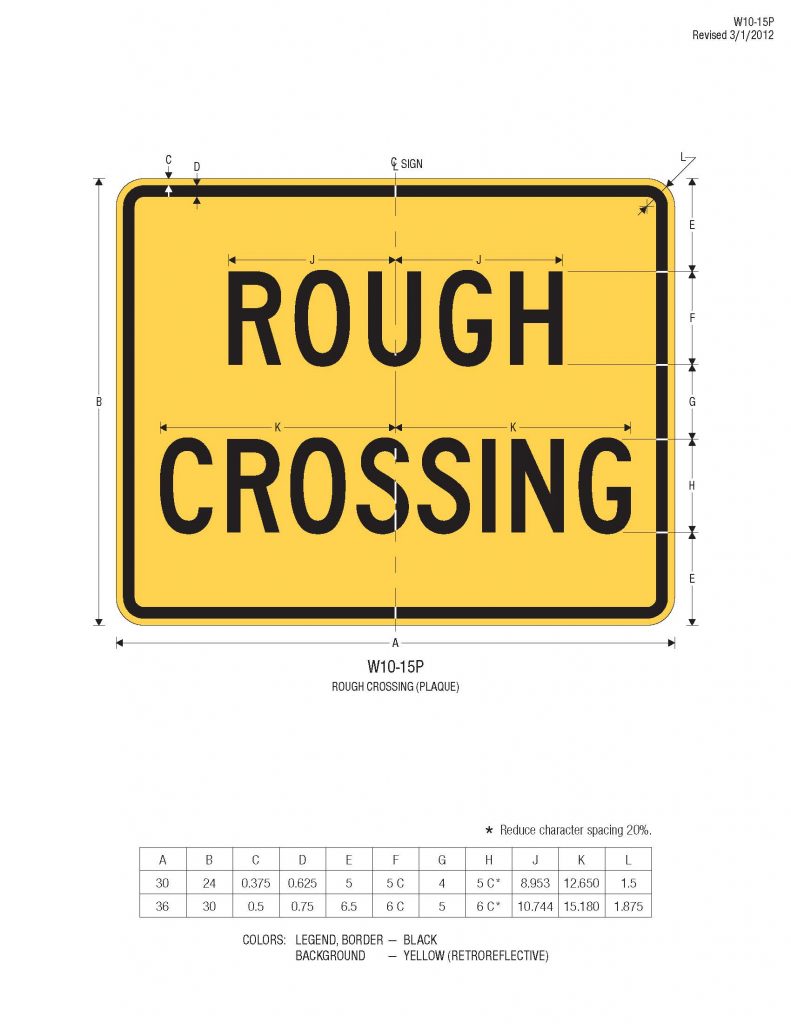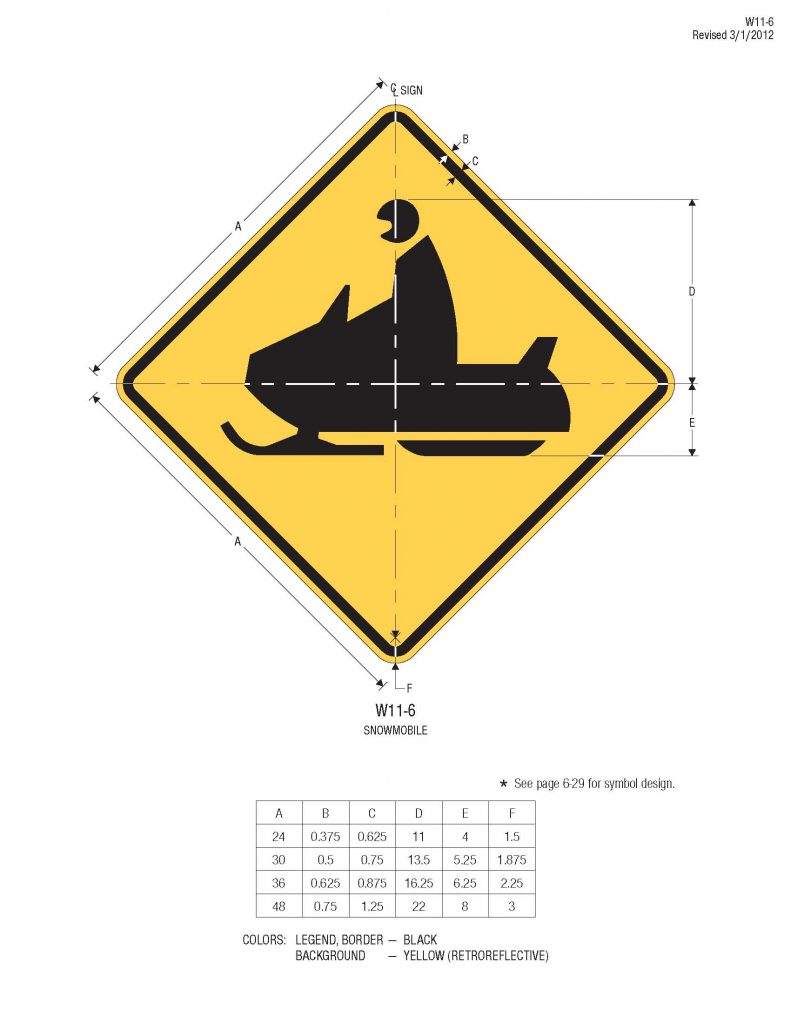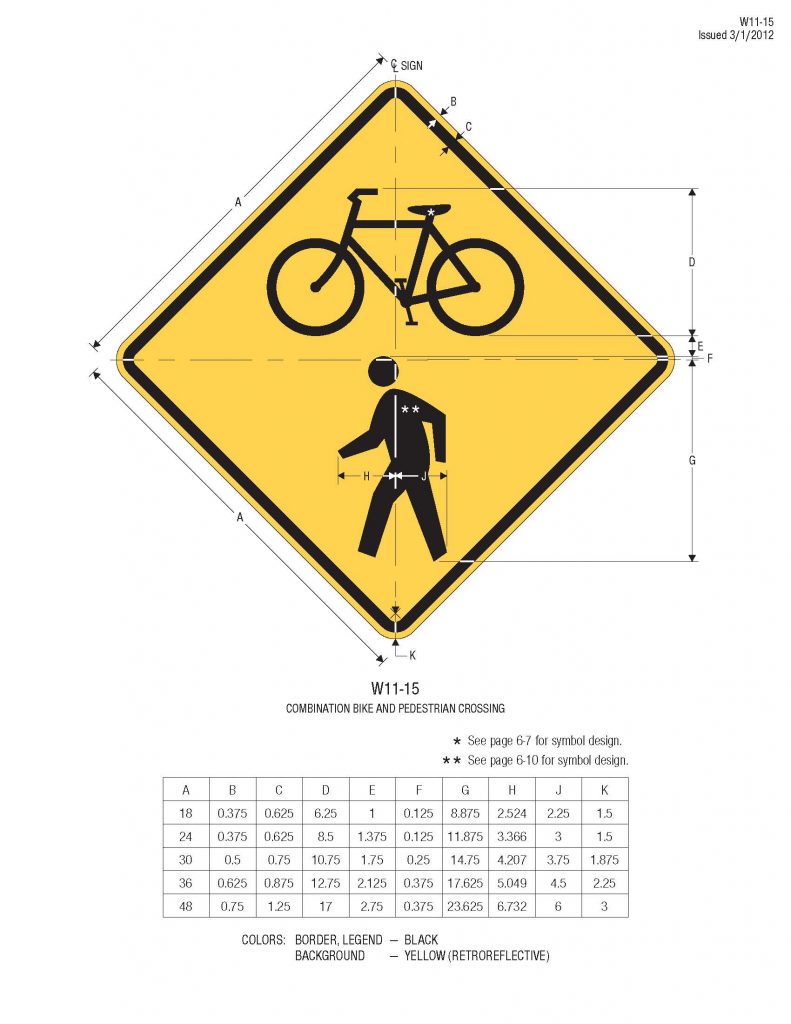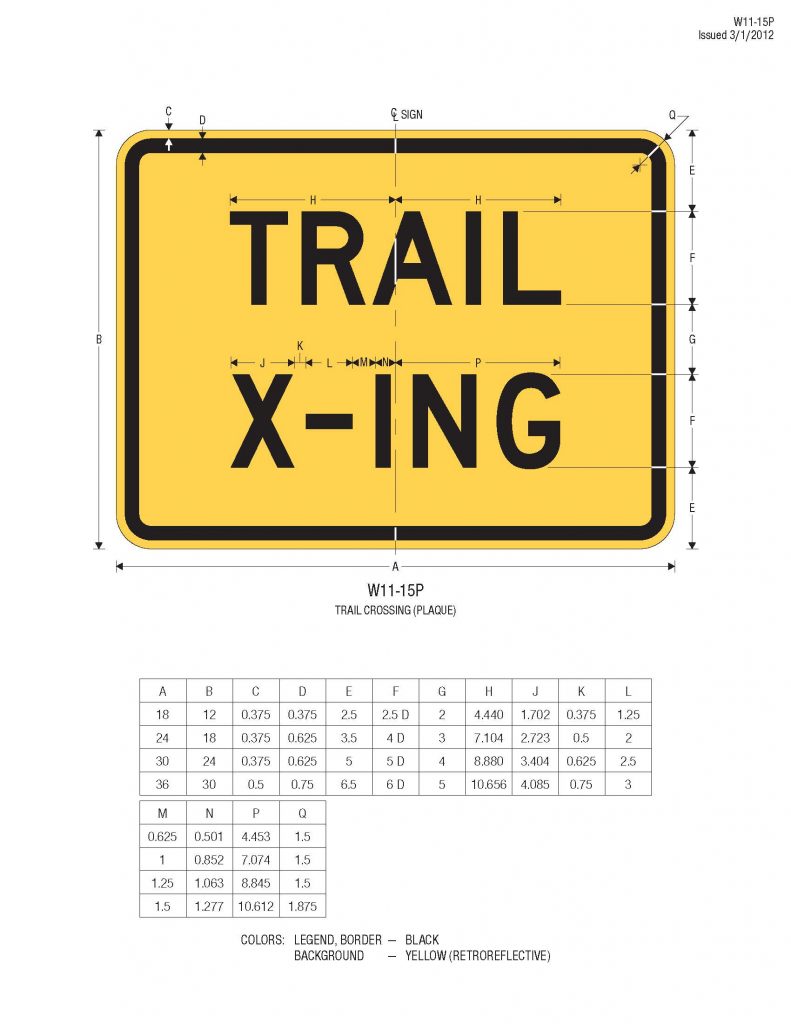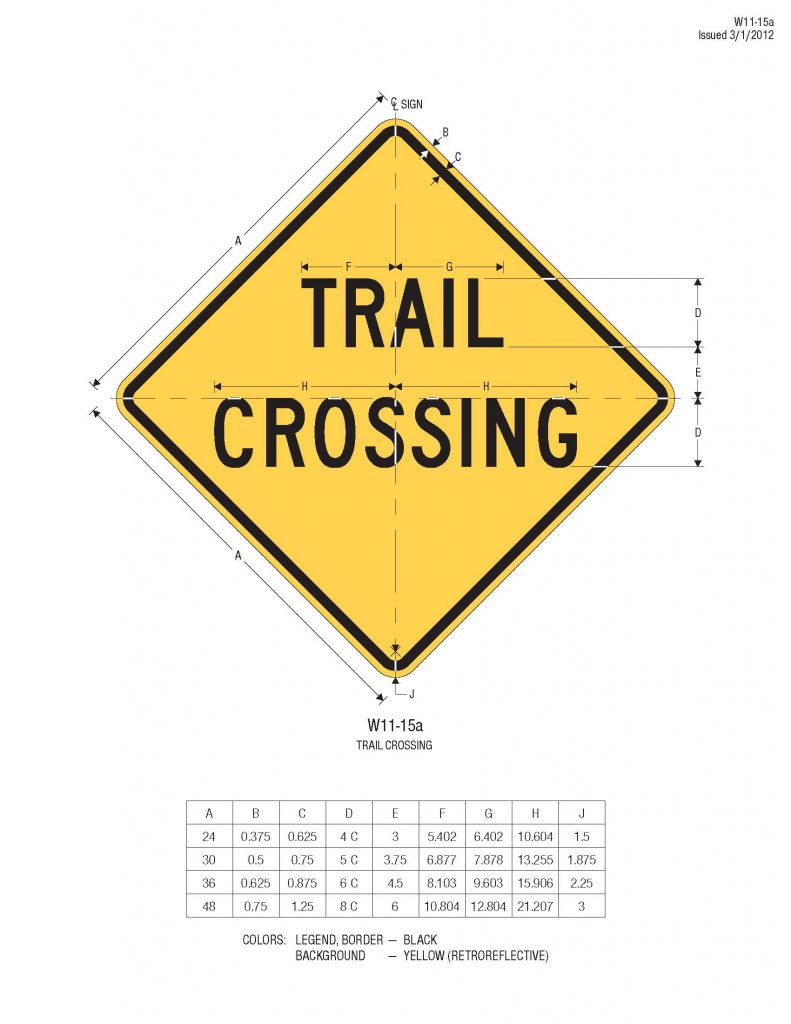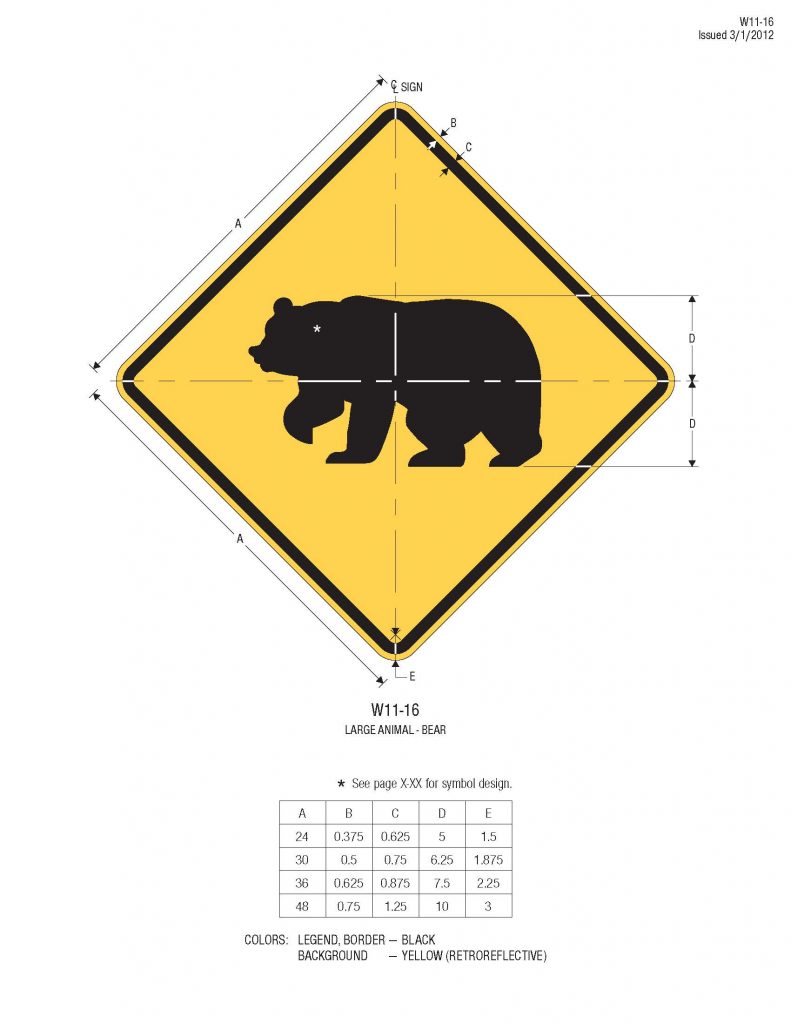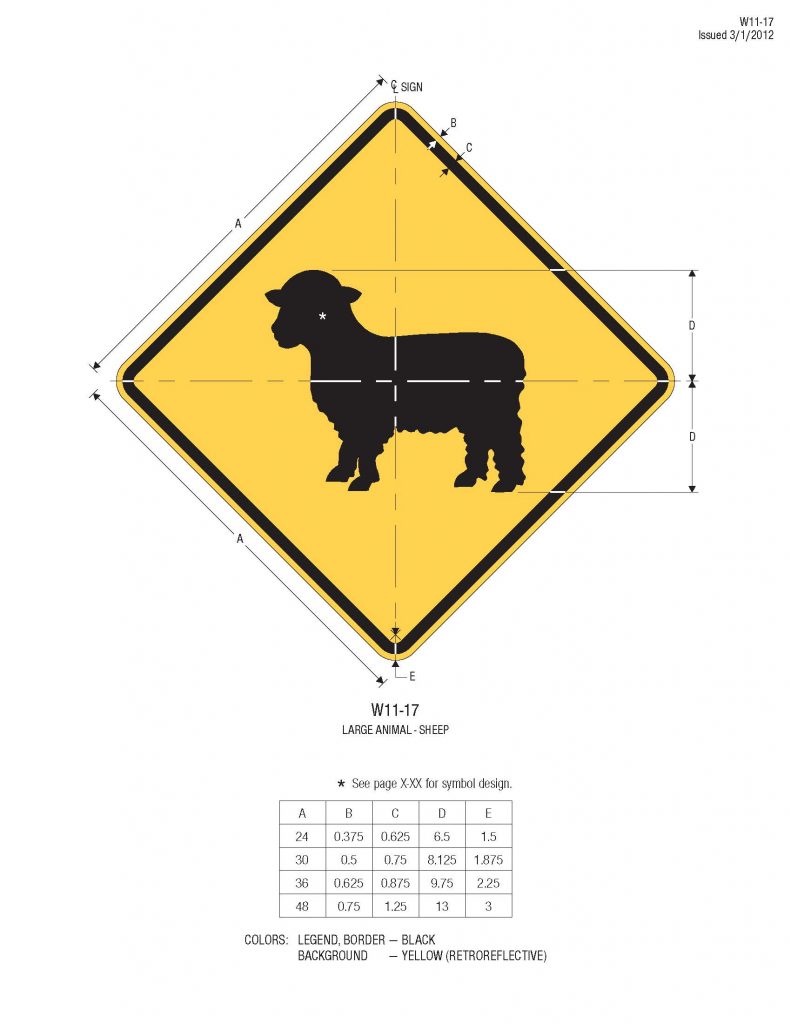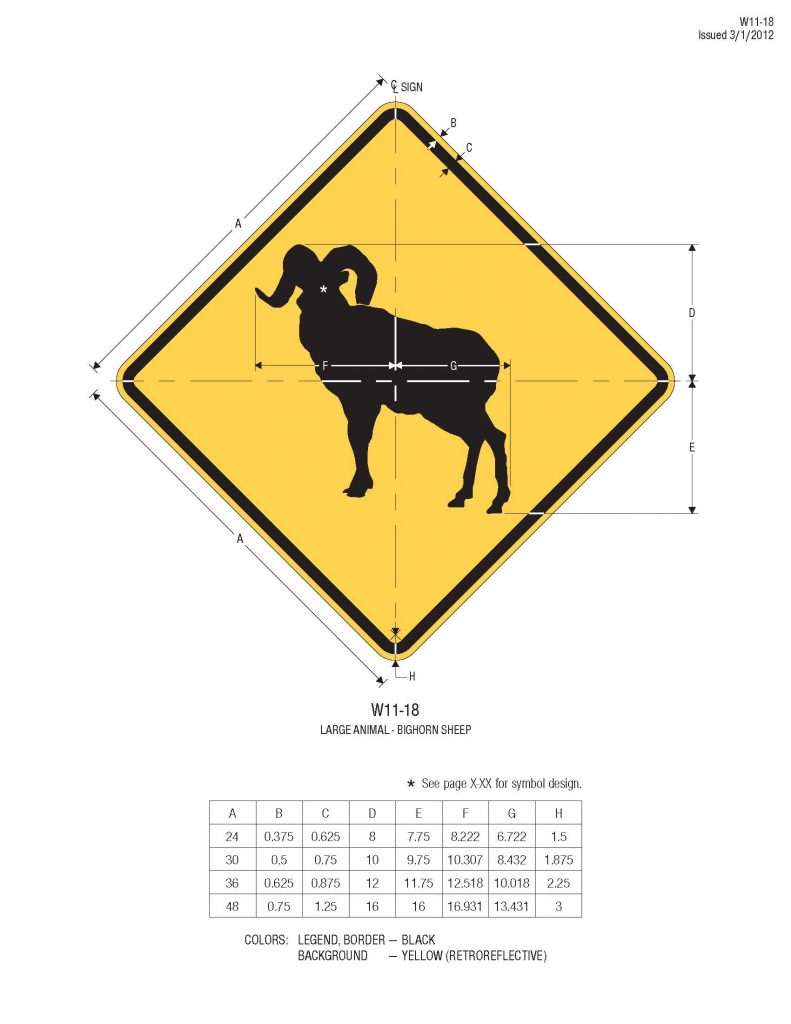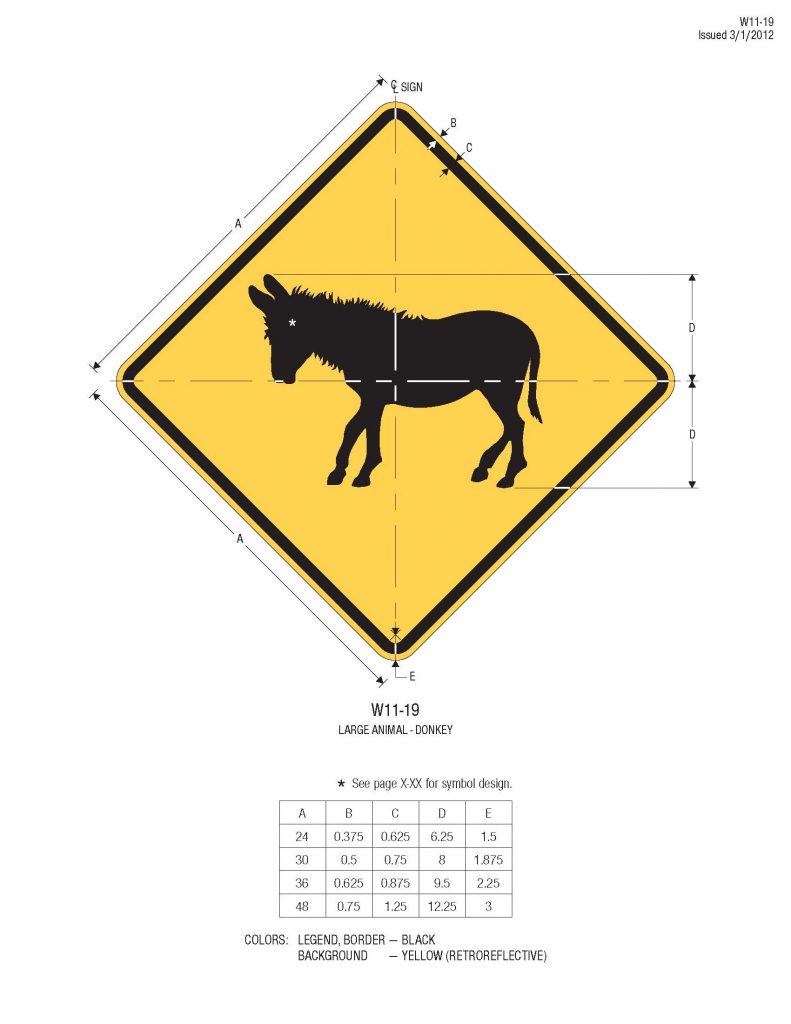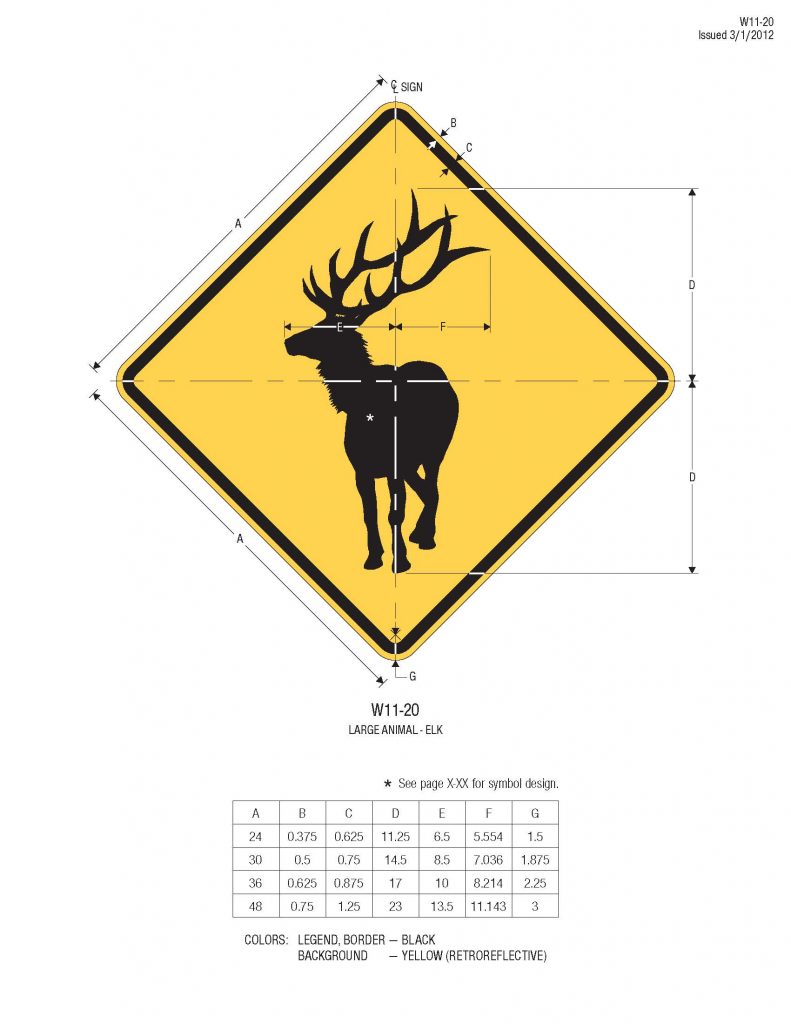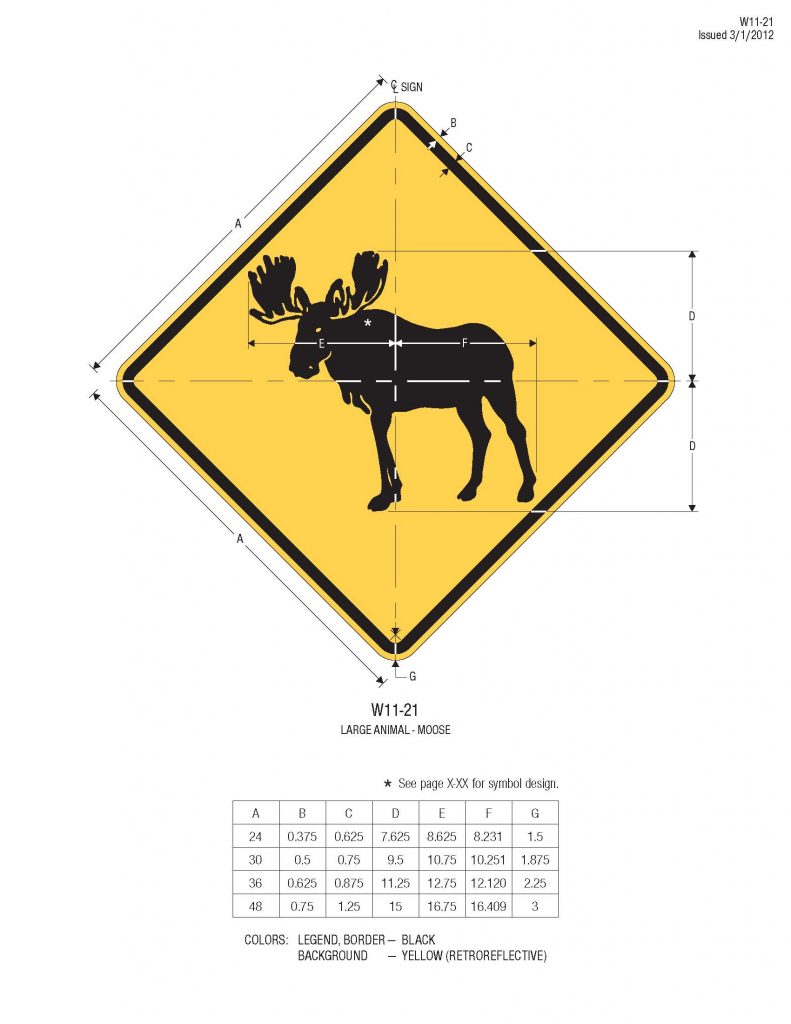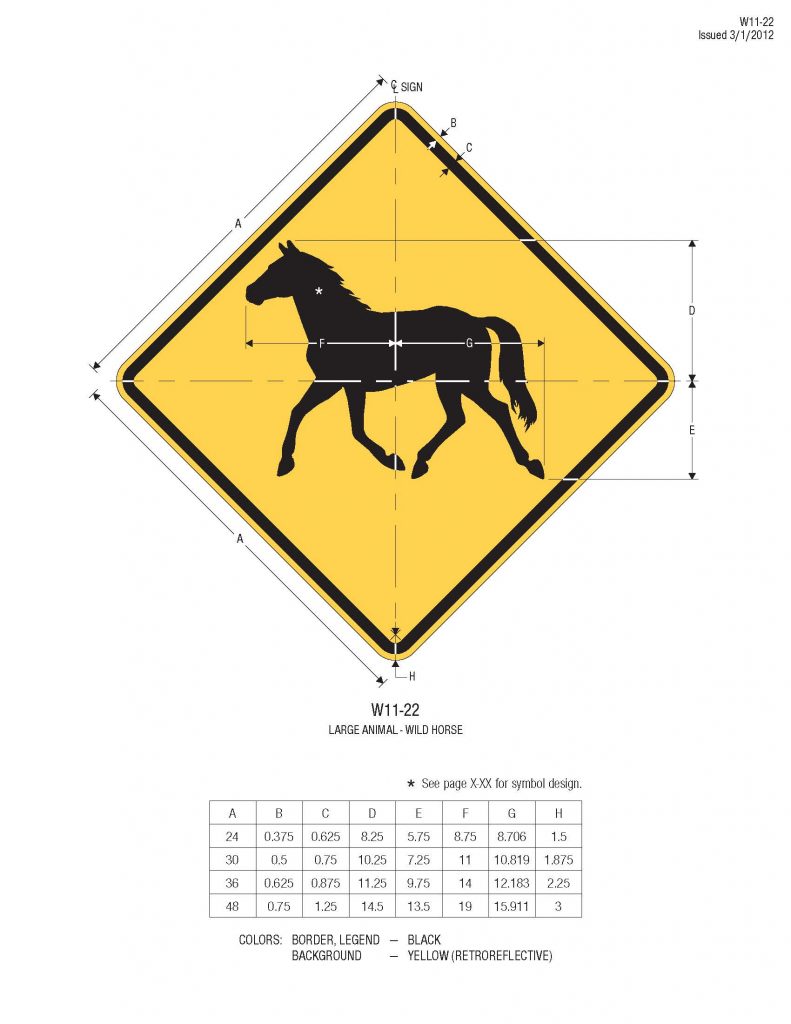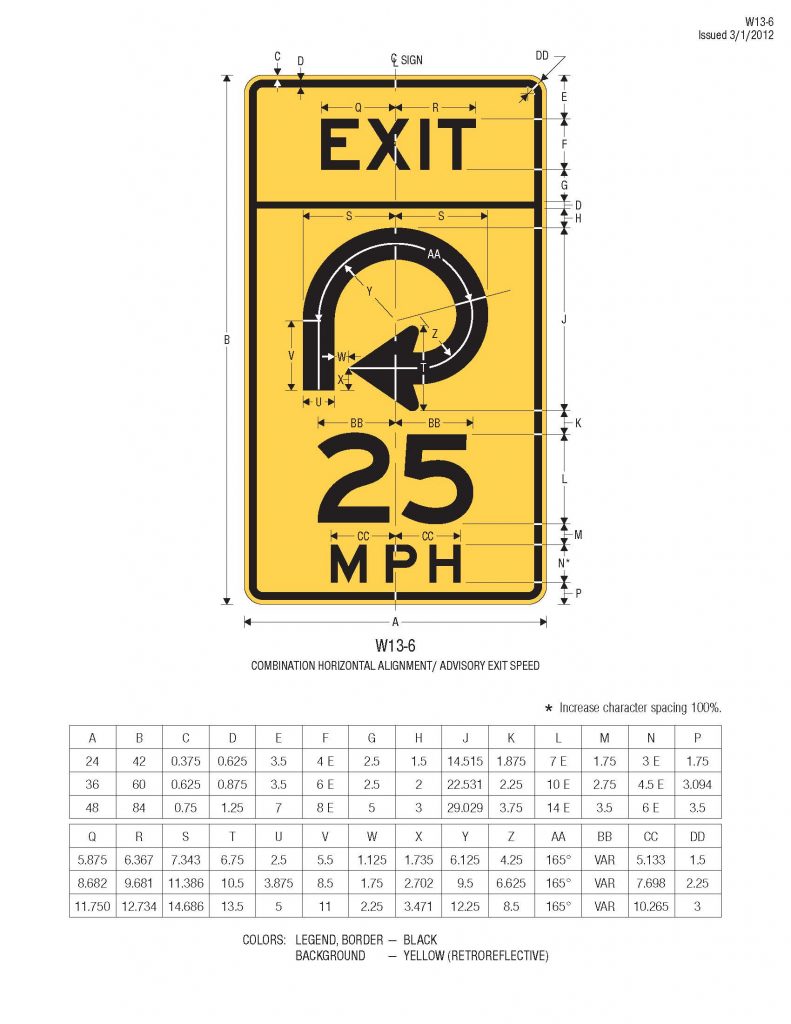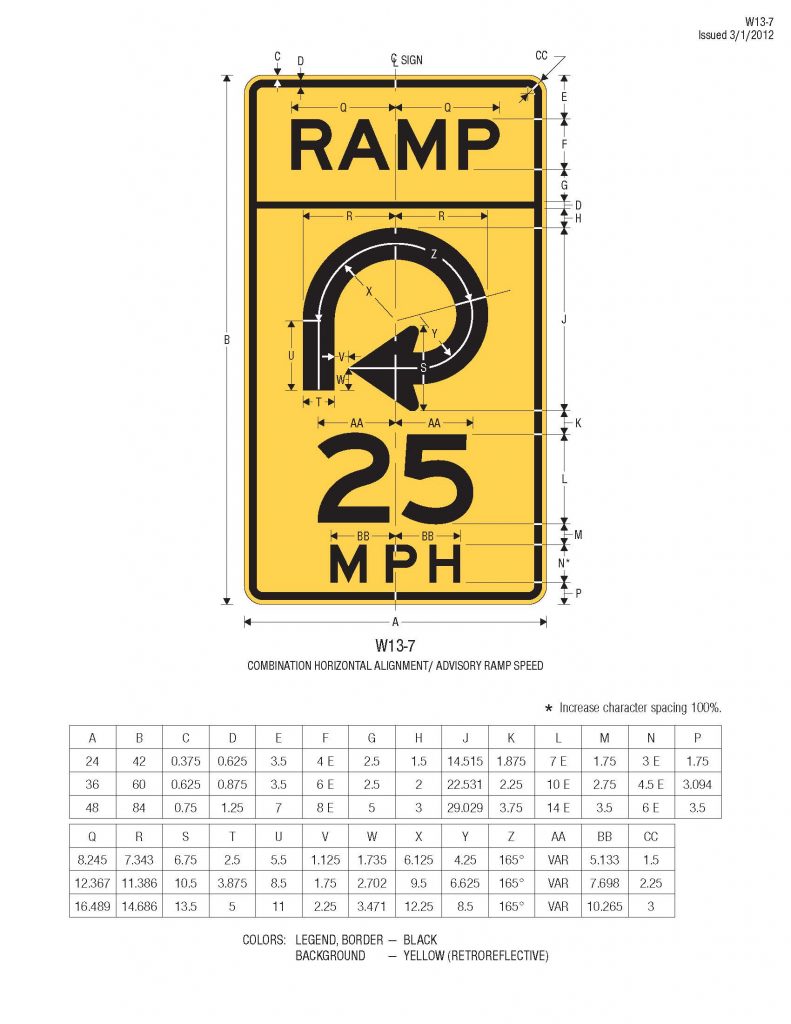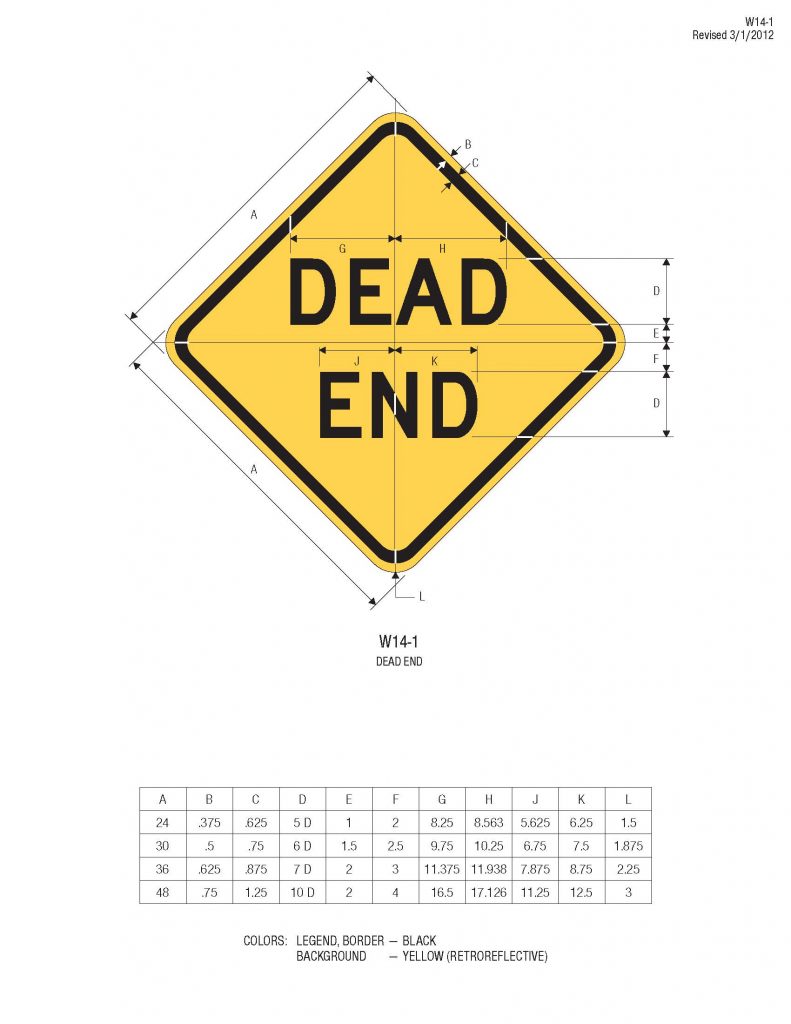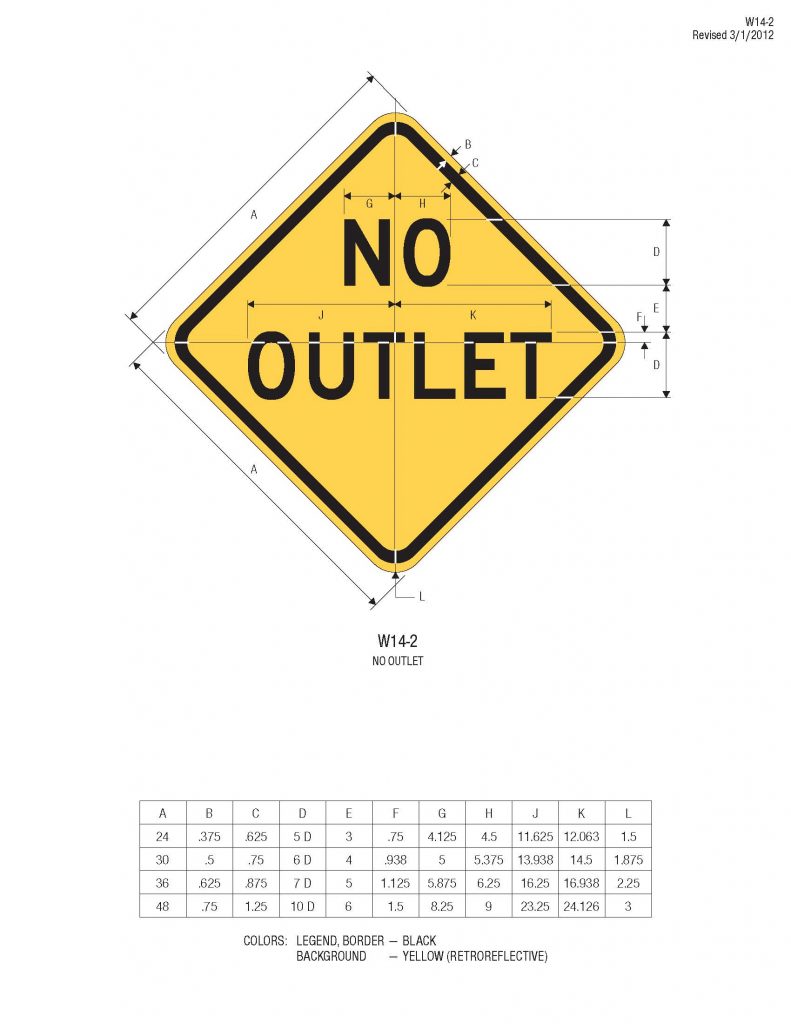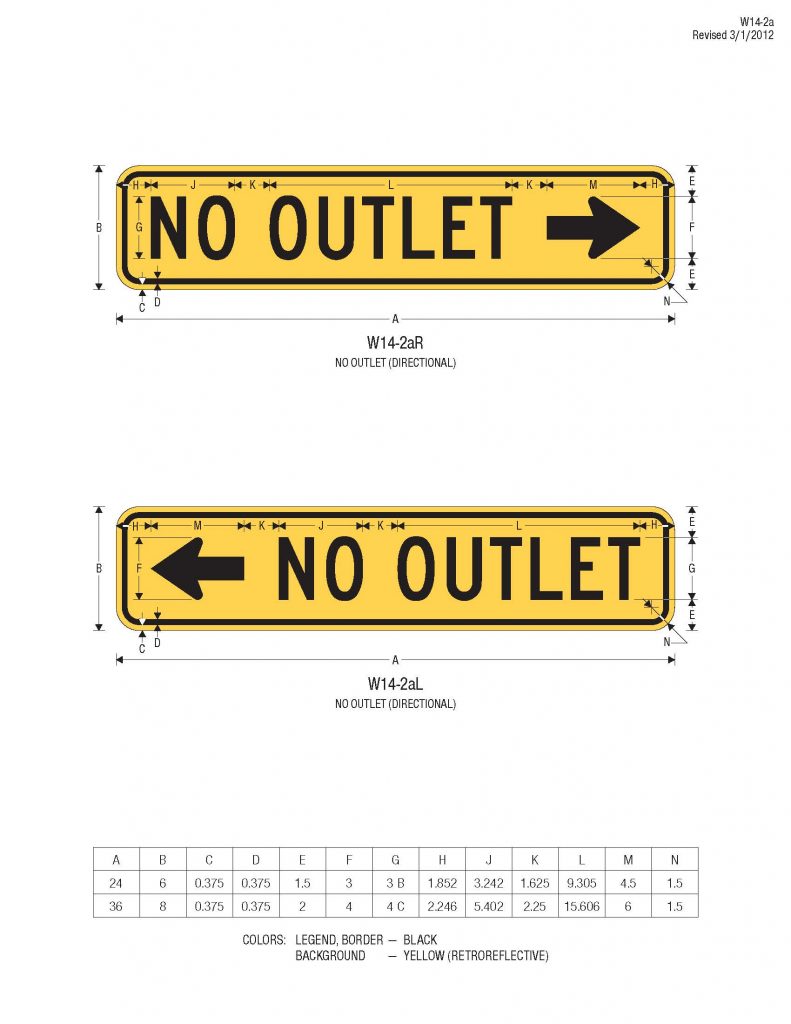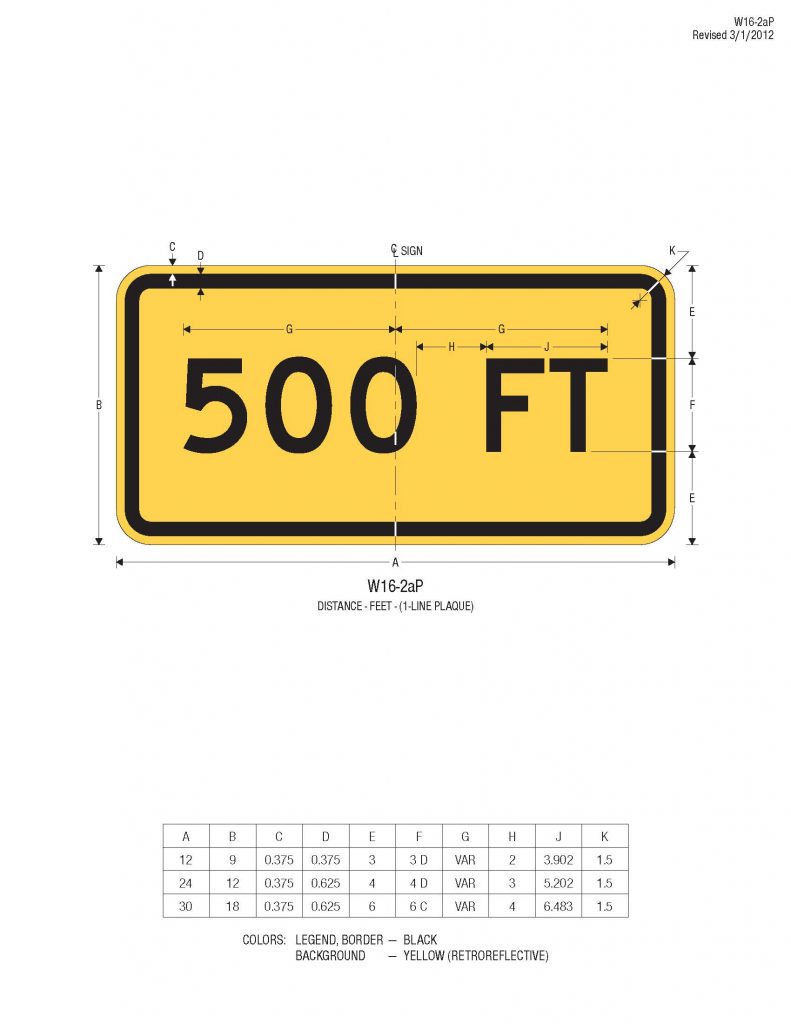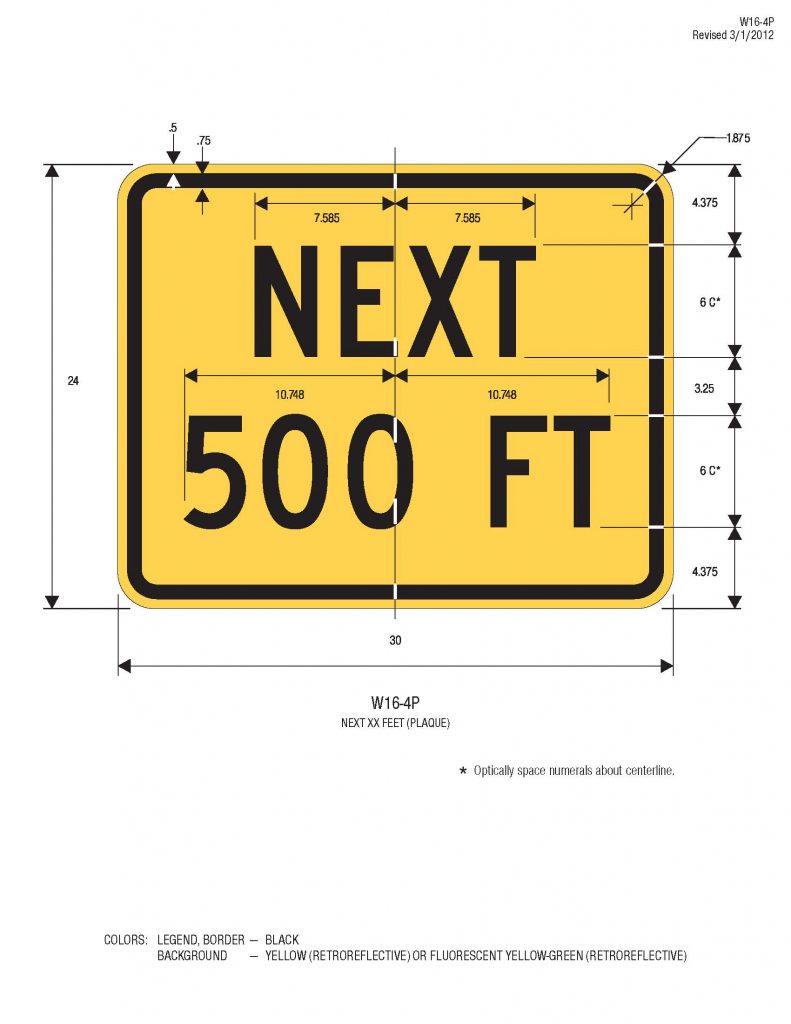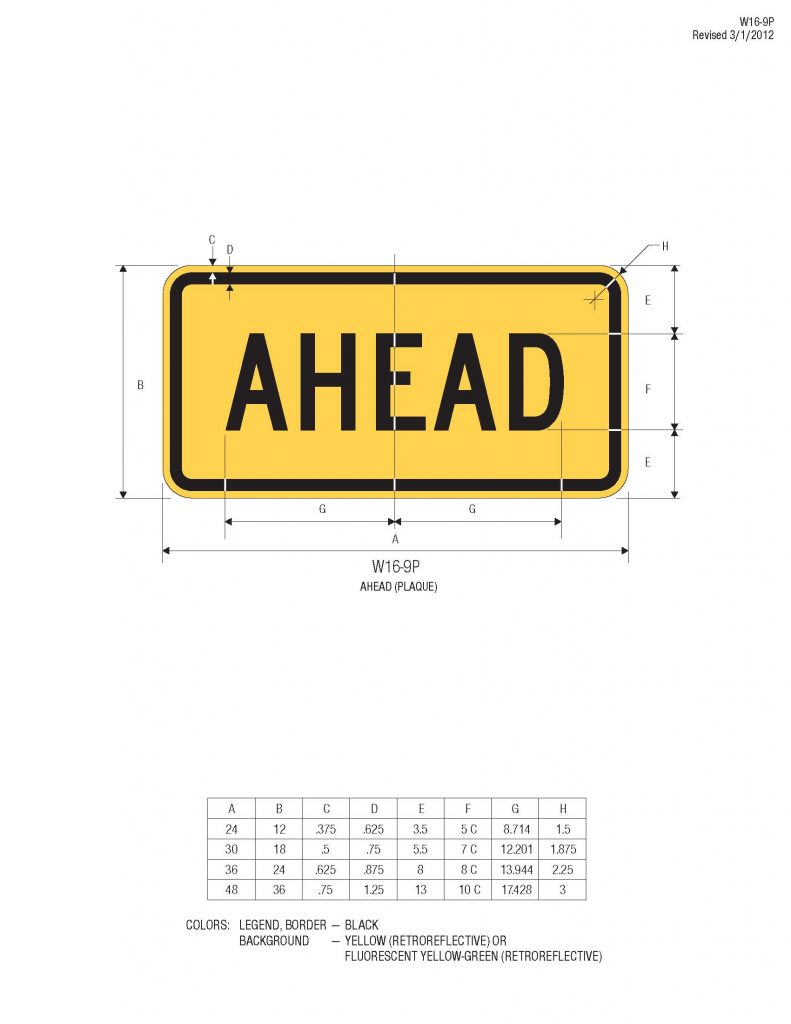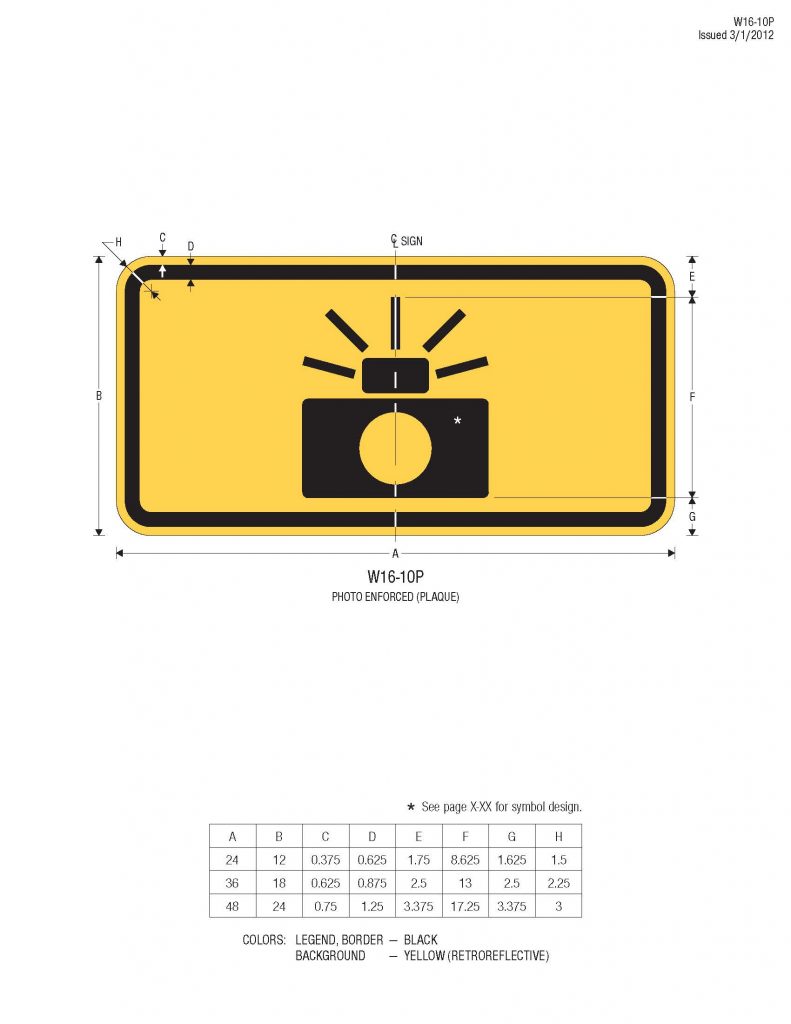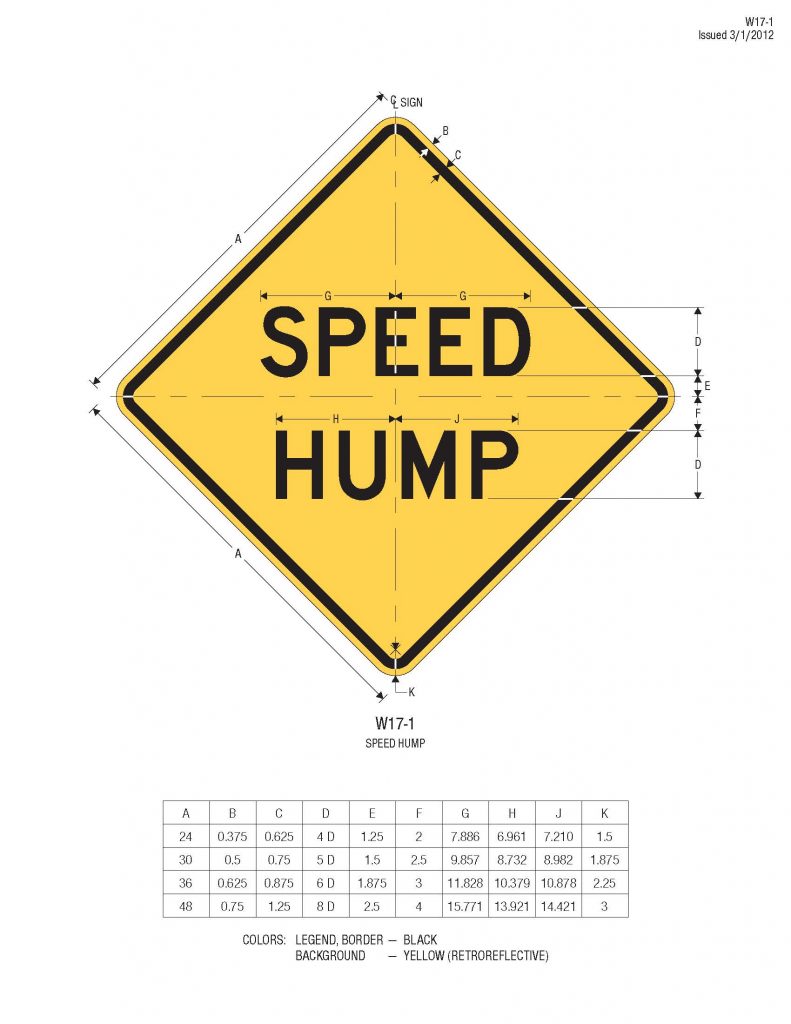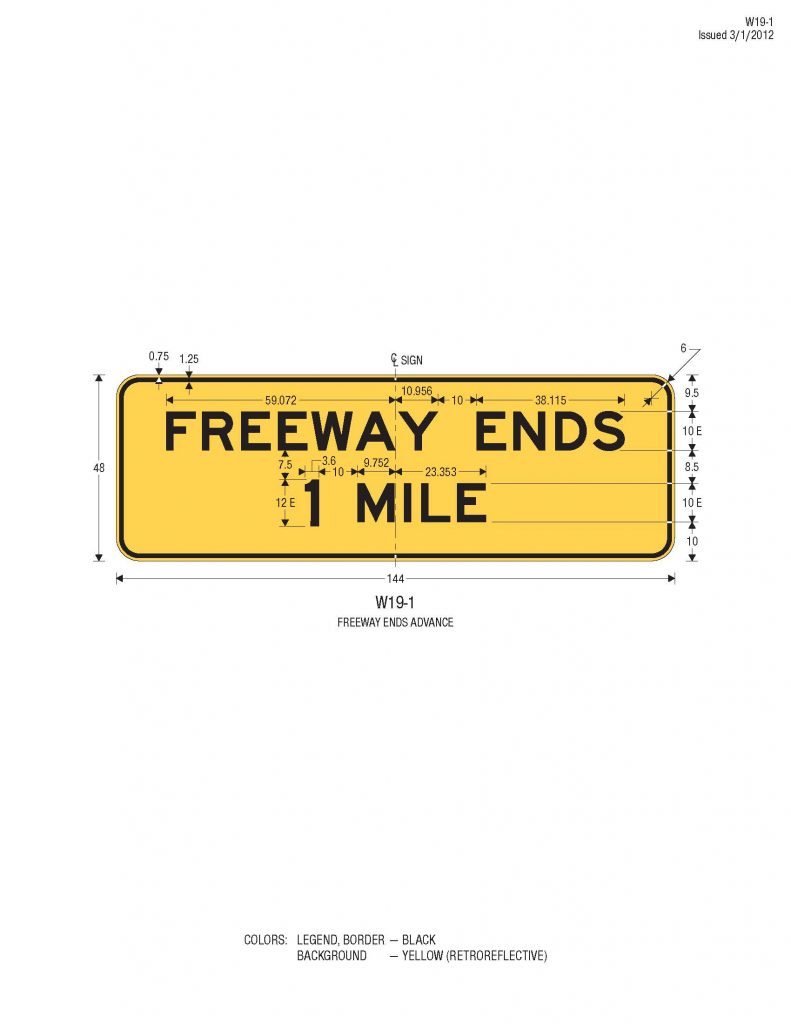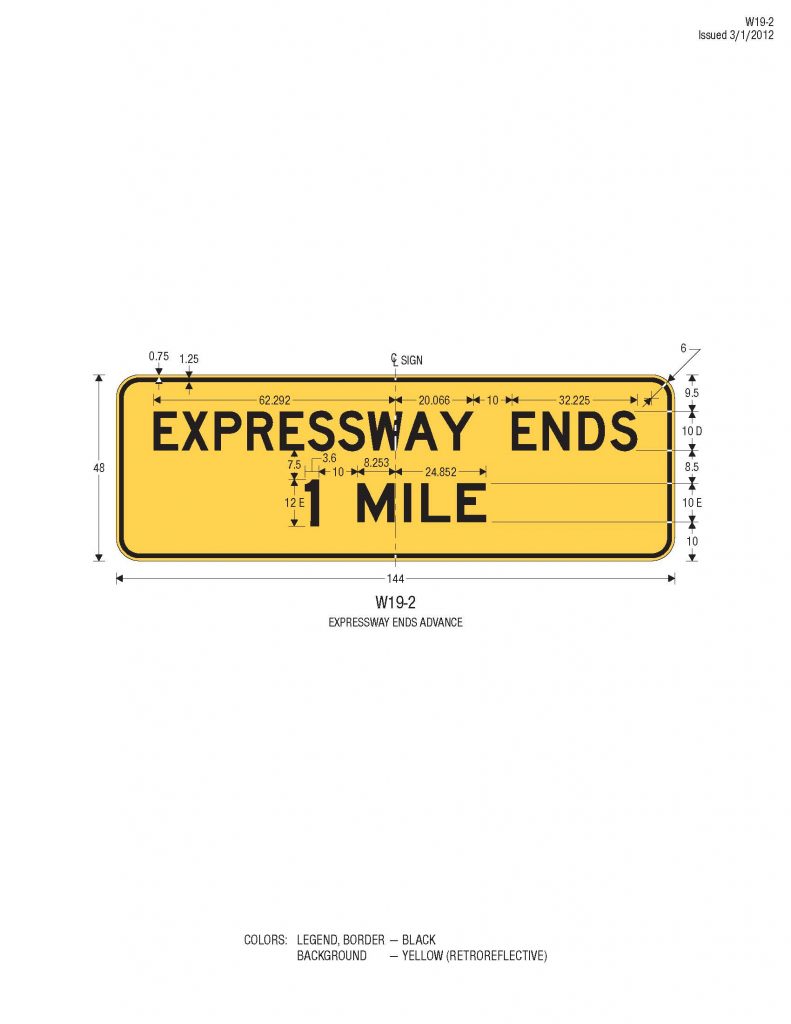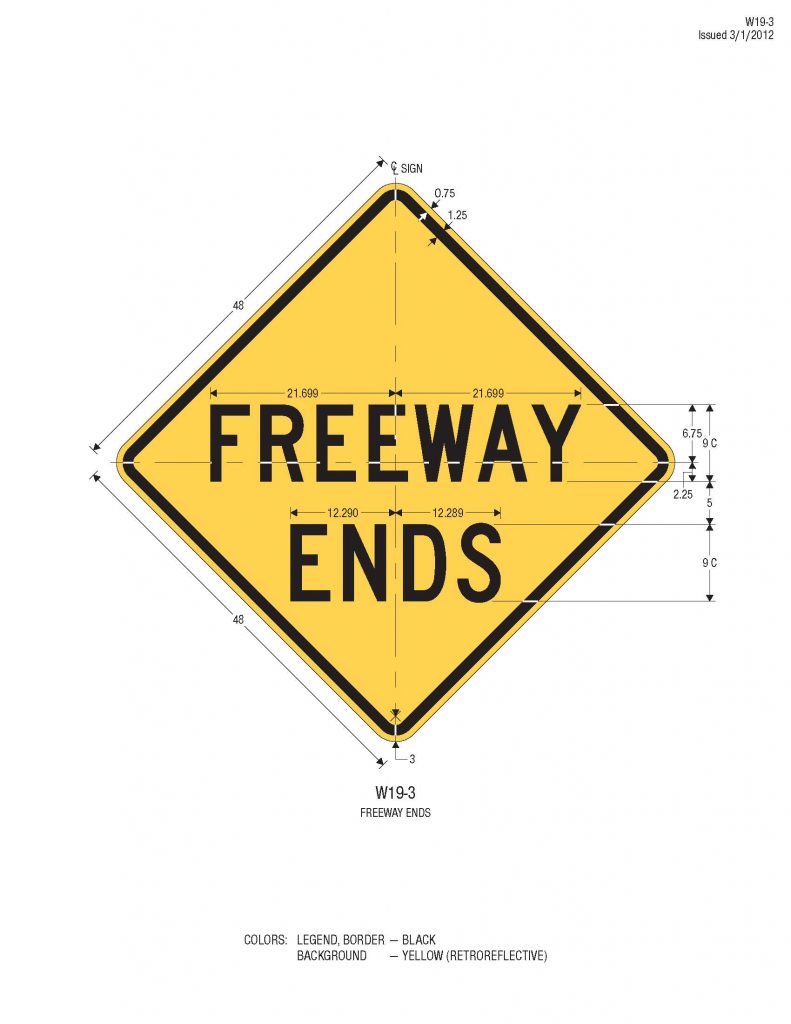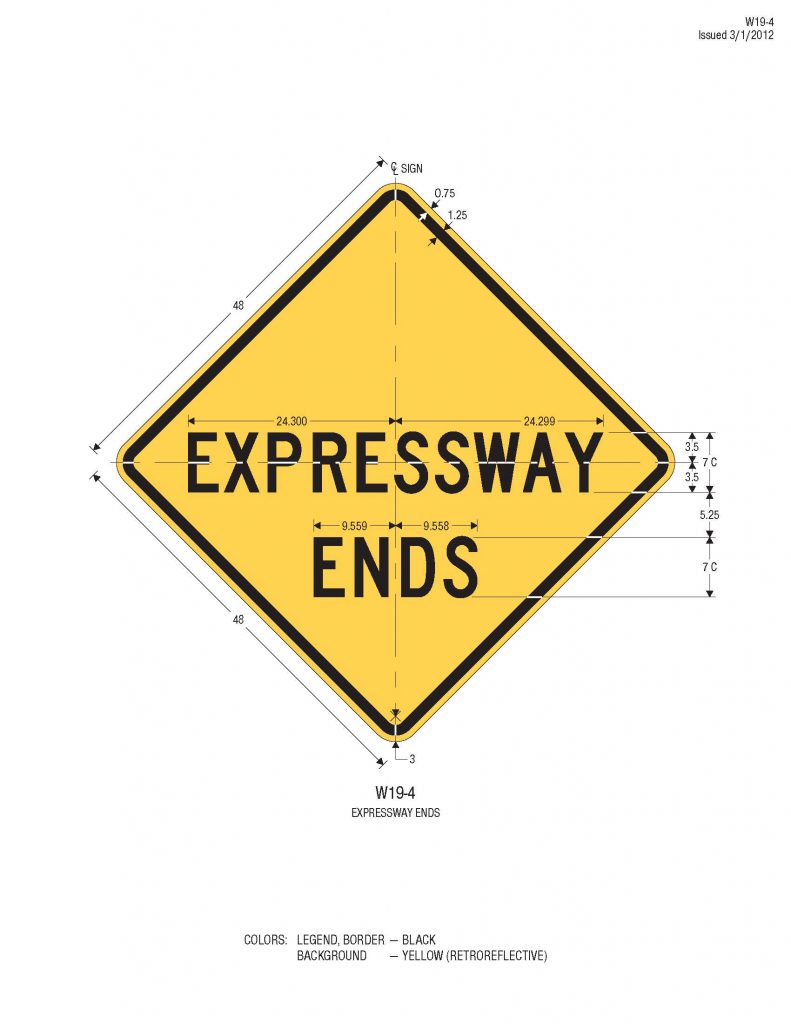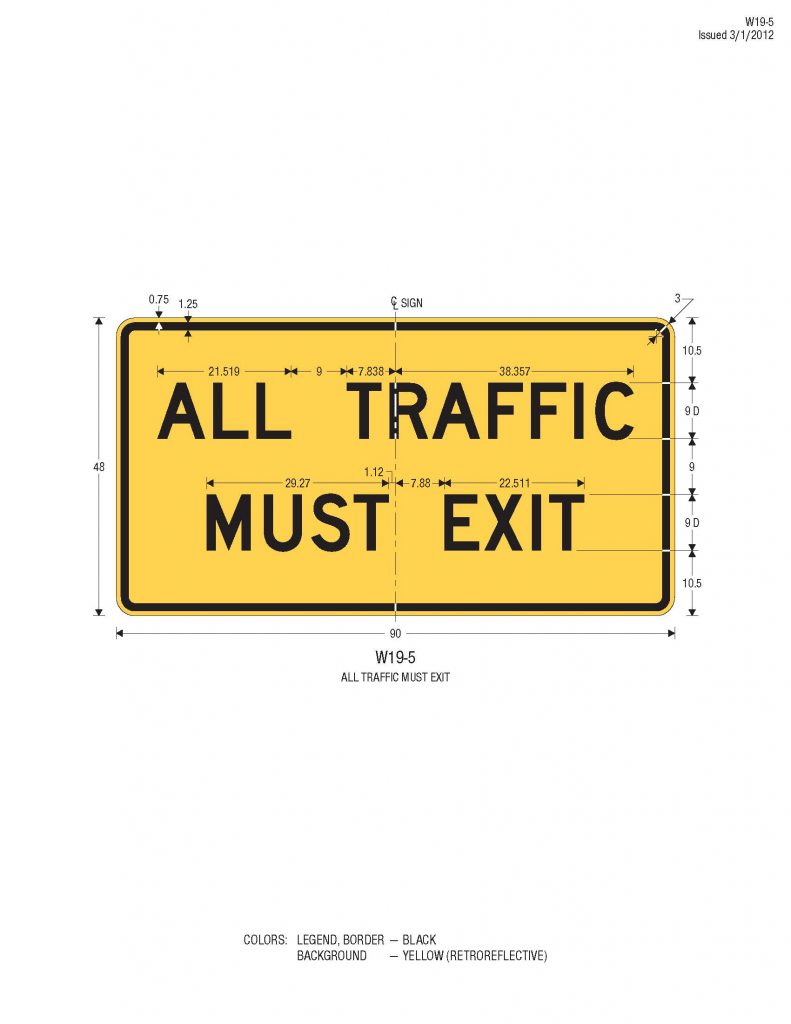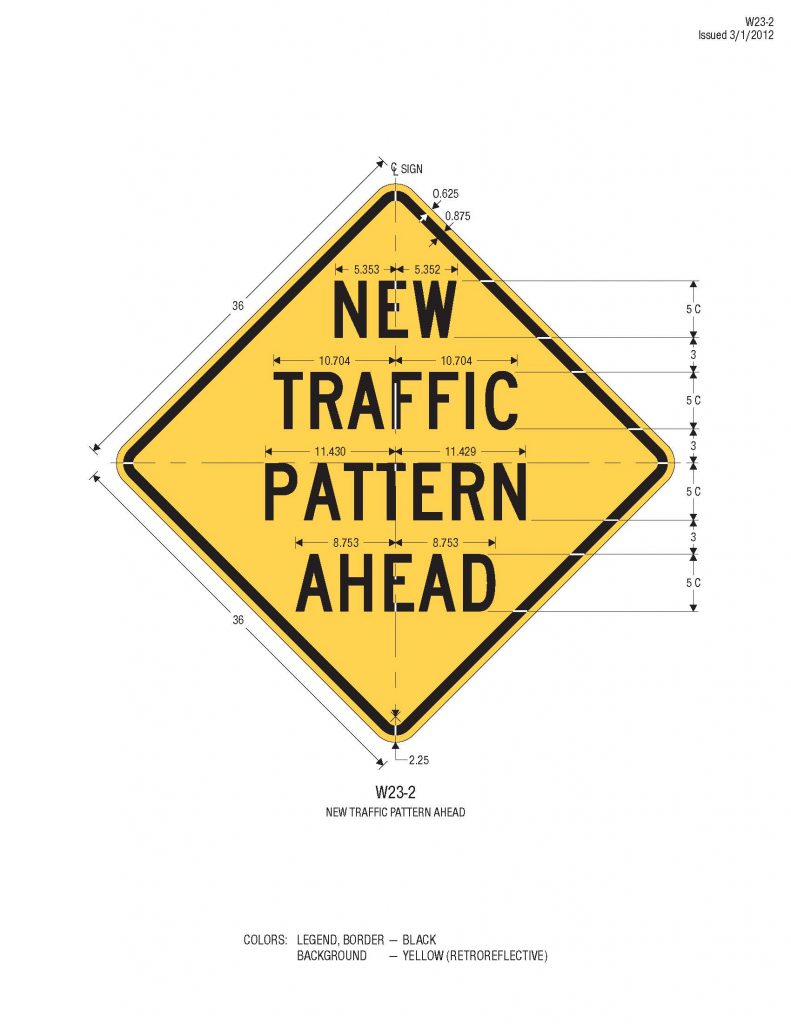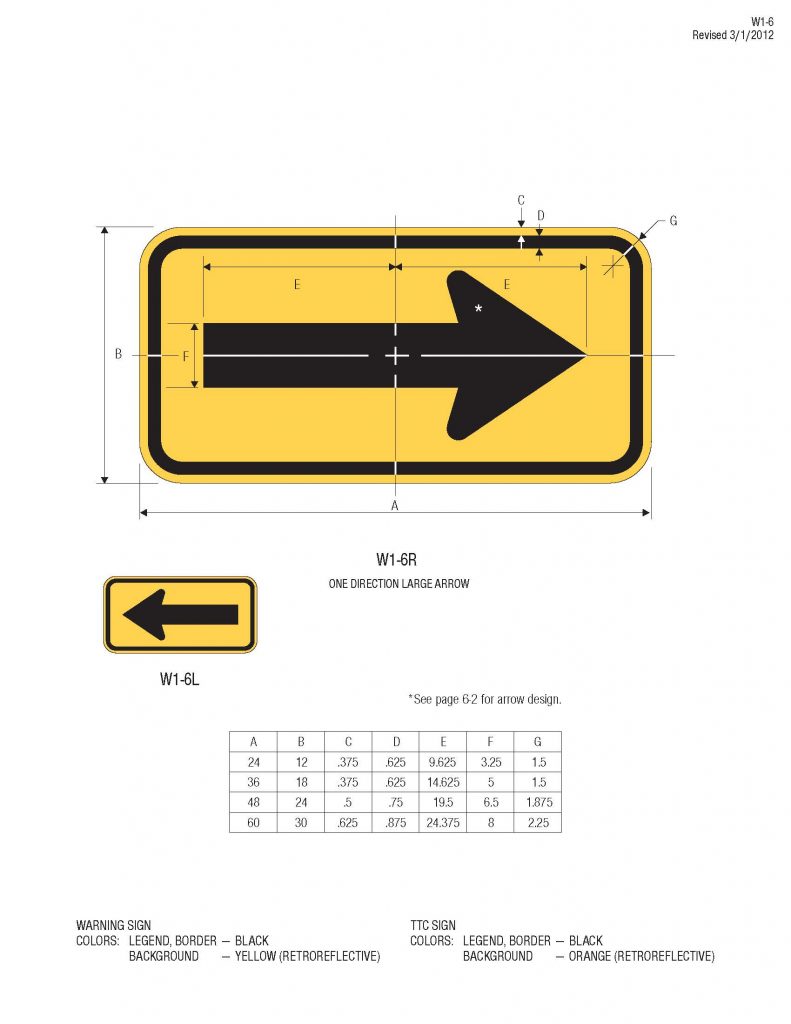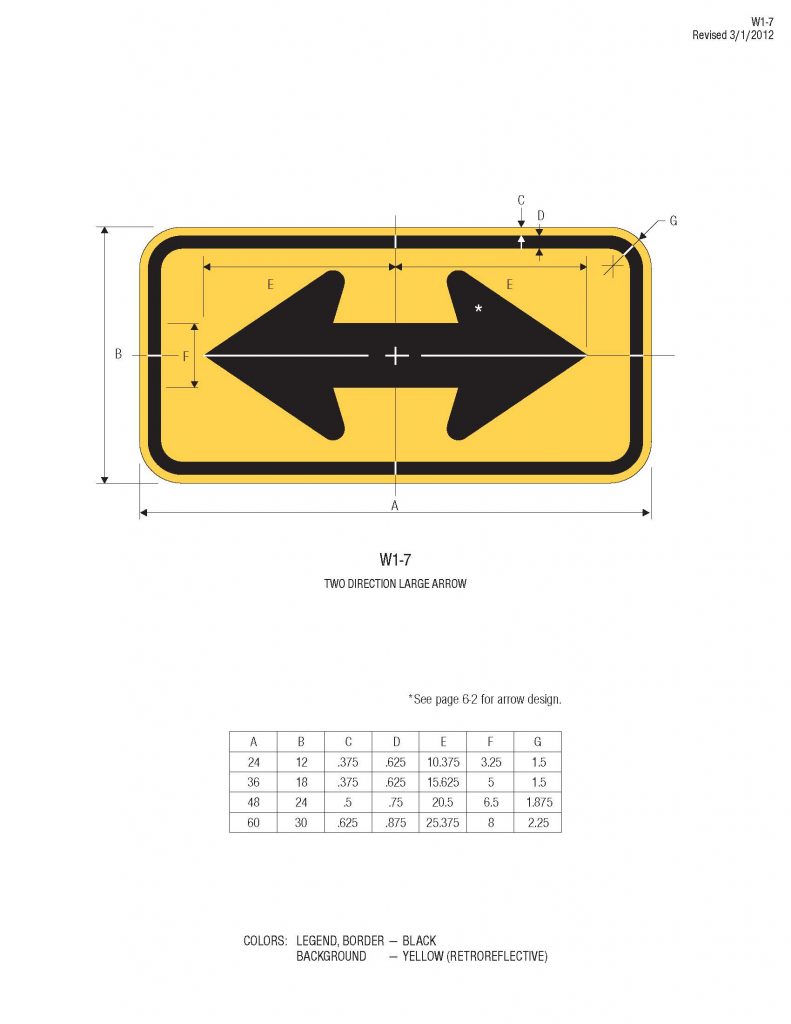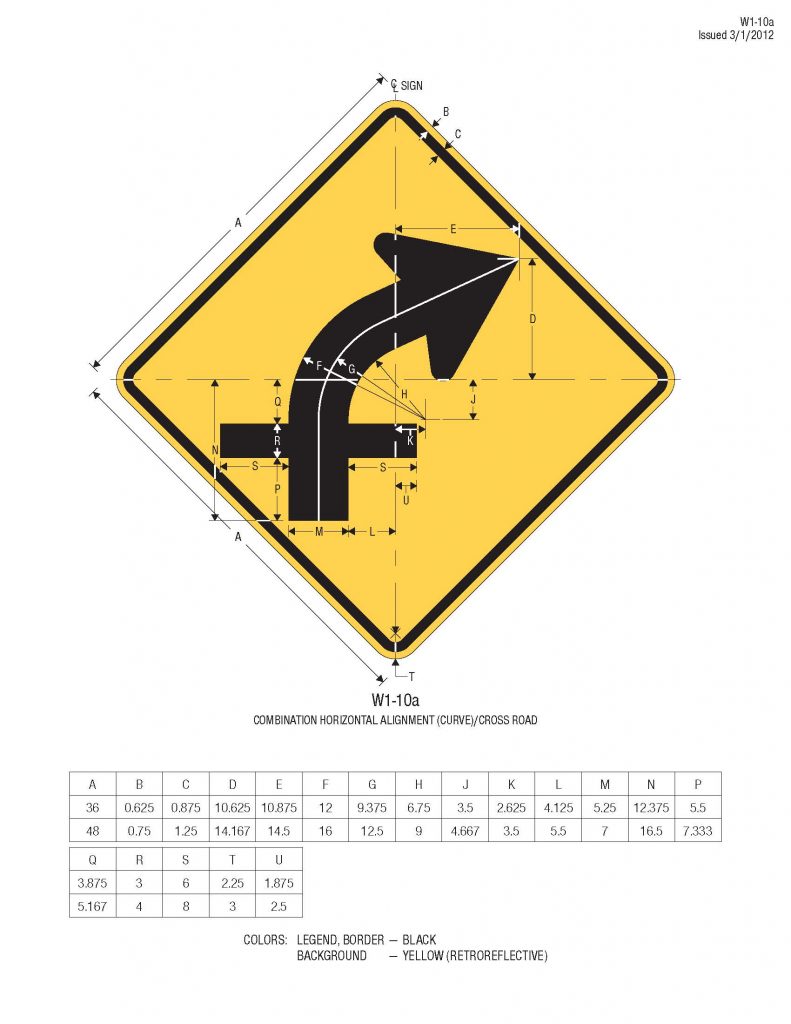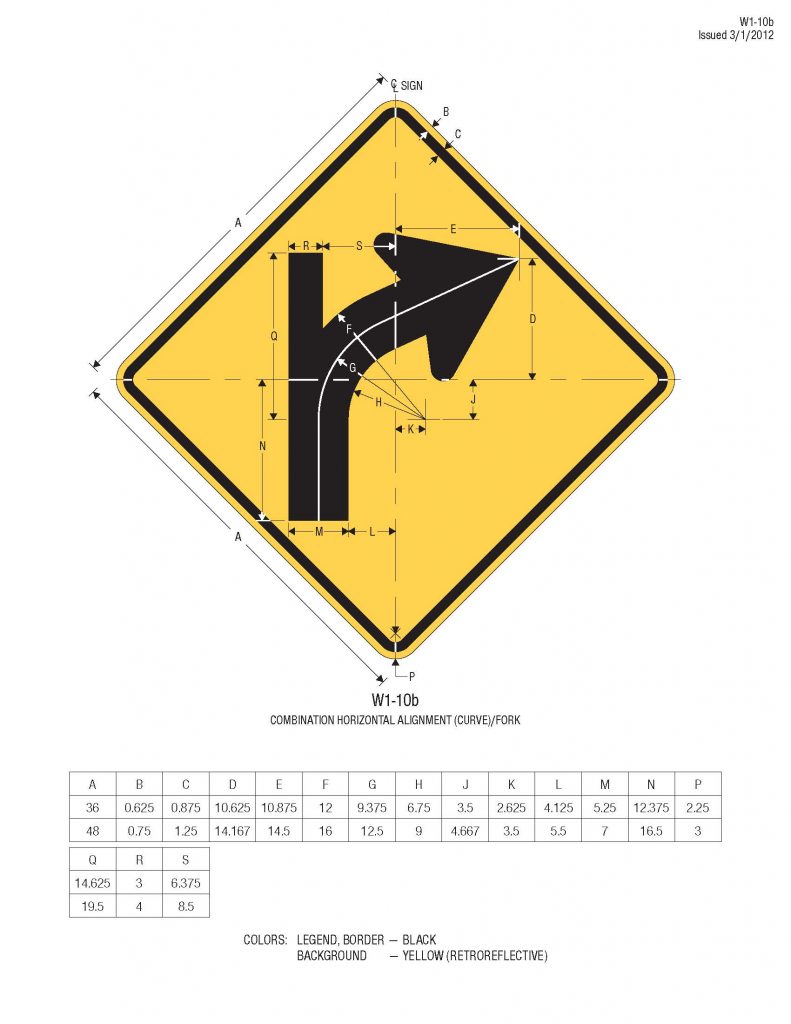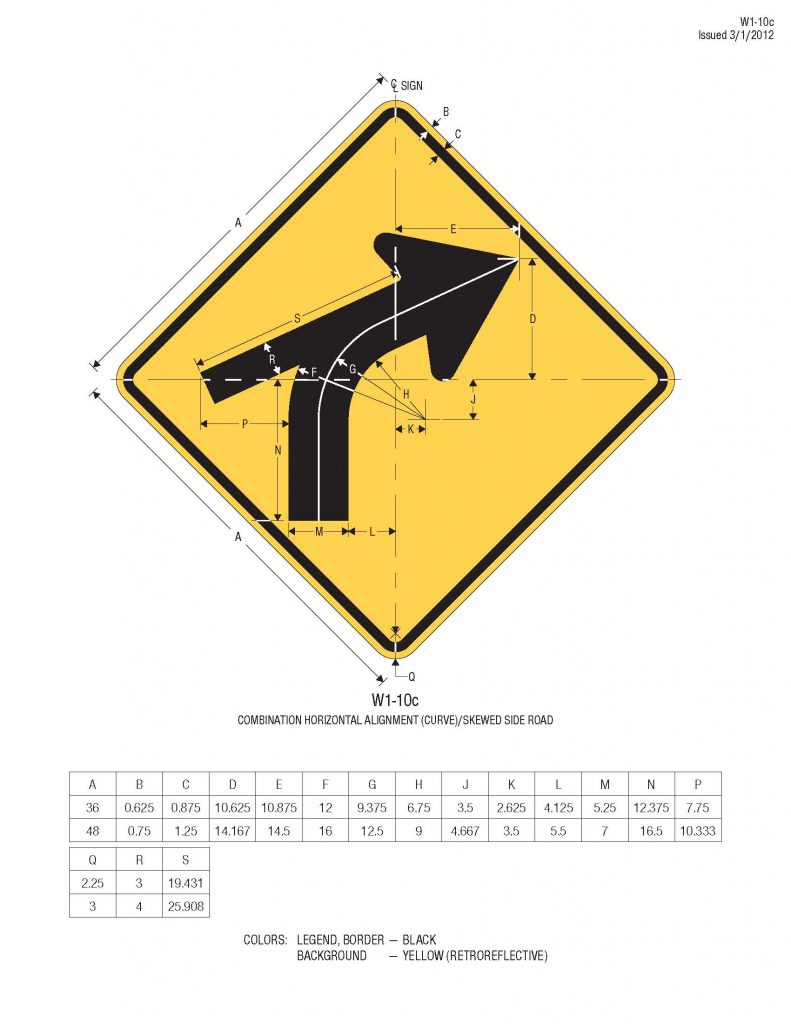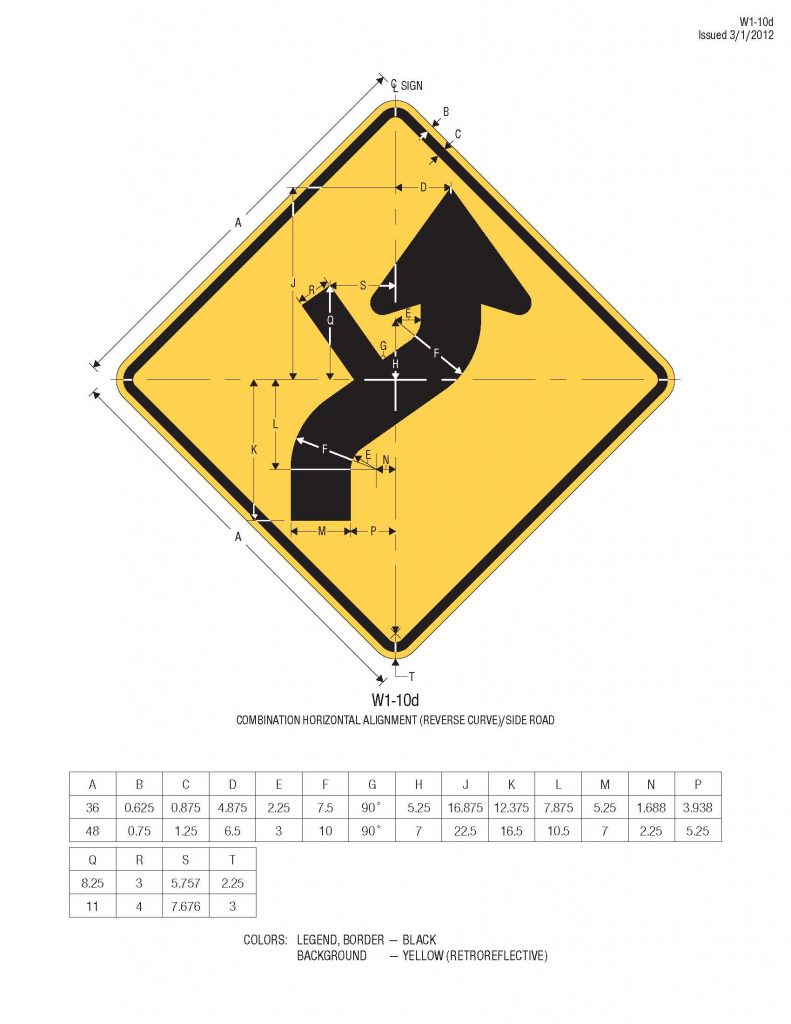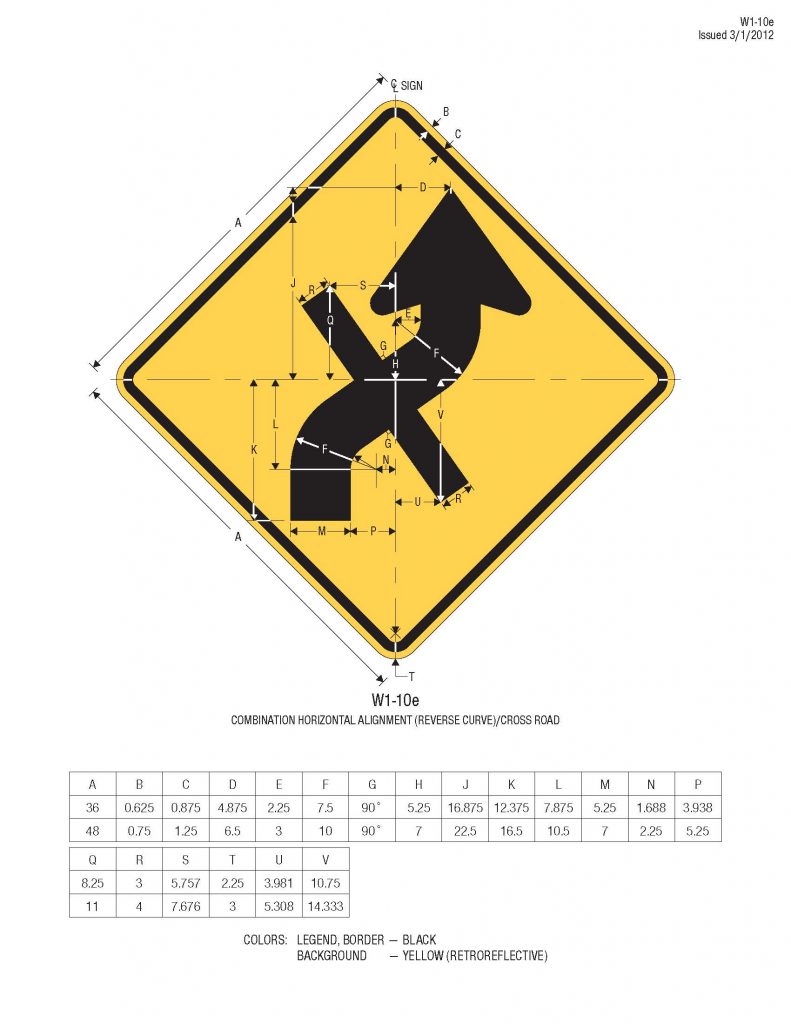Warning Signs
A warning sign is a type of sign which indicates a potential hazard, obstacle or condition requiring special attention.
Call (802) 223-8948 or click here to order online!
- W3-6 (Draw Bridge)
- W3-7 (Ramp Meter Ahead)
- W3-8 (Ramp Metered When Flashing)
- W4-3R (Added Lane)
- W4-4aP (Traffic From Left Does Not Stop)
- W4-4bP (Oncoming Traffic Does Not Stop)
- W4-5P (No Merge Area)
- W5-2 (Narrow Bridge)
- W5-4a (Path Narrows)
- W7-3P (x% Grade)
- W7-3aP (Next xx Miles)
- W8-3 (Pavement Ends)
- W8-4 (Soft Shoulder)
- W8-5 (Slippery When Wet)
- W8-5P (When Wet)
- W8-5aP (Ice)
- W8-5bP (Steel Deck)
- W8-5cP (Excess Oil)
-
W8-10 (Bicycle Surface Condition)
W8-10P (Slippery When Wet)
- W8-12 (No Center Line)
- W8-13 (Bridge Ices Before Road)
- W8-14 (Fallen Rocks)
- W8-15 (Grooved Pavement)
- W8-15P (Motorcycle Plaque)
- W8-16 (Metal Bridge Deck)
- W8-17R (Shoulder Drop Off)
- W8-17P (Shoulder Drop-Off)
- W8-18 (Road May Flood)
- W8-19 (Flood Gauge)
- W8-21 (Gusty Winds Area)
- W8-22 (Fog Area)
- W8-23 (No Shoulder)
- W8-25 (Shoulder Ends)
- W9-6 (Pay Toll Advance)
- W9-6P (Pay Toll Advance)
- W9-6a (Stop Ahead Pay Toll)
- W9-6aP (Stop Ahead Pay Toll)
- W9-7R (Right Lane Exit Only Ahead) W9-7L (Left Lane Exit Only)
- W10-5P (Low Ground Clearance)
- W10-7 (Light Rail Activated)
- W10-9P (No Train Horn)
- W10-9P (No Train Horn)
- W10-11a (Storage Space)
- W10-11b (Storage Space Behind)
- W10-13P (No Gates or Lights)
- W10-14P (Next Crossing)
- W10-14aP (Use Next Crossing)
- W10-15P (Rough Crossing)
- W11-6 (Snowmobile)
- W11-15 (Combination Bike and Pedestrian Crossing)
- W11-15P (Trail Crossing)
- W11-15a (Trail Crossing)
- W11-16 (Large Animal – Bear)
- W11-17 (Large Animal – Sheep)
- W11-18 (Large Animal – Bighorn Sheep)
- W11-19 (Large Animal – Donkey)
- W11-20 (Large Animal – Elk)
- W11-21 (Large Animal – Moose)
- W11-22 (Large Animal – Wild Horse)
- W13-6 (Combination Horizontal Alignment/Advisory Exit Speed)
- W13-7 (Combination Horizontal Alignment/ Advisory Ramp Speed)
- W14-1 (Dead End)
- W14-1aL (Dead End – Directional)
- W14-2 (No Outlet)
- W14-2aL (No Outlet – Directional)
- W16-2aP (Distance – Feet)
- W16-4P (Next XX Feet)
- W16-9P (Ahead)
- W16-10P (Photo Enforced)
- W17-1 (Speed Hump)
- W19-1 (Freeway Ends)
- W19-2 (Expressway ends)
- W19-3 (Freeway Ends)
- W19-4 (Expressway Ends)
- W19-5 (All Traffic Must Exit)
- W23-2 (New Traffic Pattern Ahead)
- W1-6R (One Direction Large Arrow)
- W1-7 (Two Direction Large Arrow)
- W1-10a (Combination Horizontal Alignment – Curve | Cross Road)
- W1-10b (Combination Horizontal Alignment – Curve | Fork)
- W1-10c (Combination Horizontal Alignment – Curve | Skewed Side Road)
- W1-10d (Combination Horizontal Alignment – Reverse Curve | Side Road)
- W1-10e (Combination Horizontal Alignment – Reverse Curve | Cross Road)
Warning signs & object markers alert workers, drivers, and customers to unexpected or unsafe conditions. Drivers and pedestrians scan these signs and are warned about conditions where they may need to be more cautious or slow down. The ANSI Z535 is a system that outlines the standards for safety markings that warn about hazards in an effort to prevent accidents. These guidelines ensure that signs are kept uniform so that users can readily recognize dangers.
Types of Warning Signs
There are five different categories of Warning Signs – three are hazard communication signs and two are informational.
Danger Signs
These signs feature a red background with white text. Danger signs are only to be used in situations where a hazard is present that will cause serious injury or even death. Reserve these signs for the most hazardous danger.
Warning Signs
Warning signs are one step down from danger signs in terms of severity. These signs use black text with an orange background. Many construction zones have these types of signs to help drivers. Place these signs in areas where serious injury or death could occur. It is recommended to keep warning signs to a minimum because having too many can breed nonchalance towards all signs.
Caution Signs
These signs are made with black text on a yellow background and used in hazardous situations that might cause an injury. “Slippery When Wet” is a common caution sign.
Notice Signs
Blue signs with white text are signs that convey information not related to safety. One example is a “no smoking” sign done in blue and white, which would indicate that smoking is prohibited due to company policy. If smoking were dangerous in the area, such as in a place where oxygen was being stored, the “no smoking sign” would be placed on a warning sign instead.
Safety Instruction Signs
Signs with white text on a green background are usually just informational but are still related to safety. The most common safety instruction signs are first aid in nature.
Colors are just as important to safety signage as words. Red is the most dangerous. Orange and yellow indicate hazards where accidents could occur; with orange signs being more severe in nature. Green signs are still about safety but do not indicate that danger is present. Black and white signs guide people or traffic or provide information that impacts safety.
Object Markers
Object markers are used on the roadway or for hazards adjacent to the roadway. There are three types of Object Markers. Type 1 is a marker that has diamond yellow retroflectors. Type 2 consists of vertical or horizontal yellow retroflectors. Type 3 is a striped marker of black and yellow alternating retroreflective strips that slope downwards.
Type 1 & Type 3 Object Markers
These signs mark obstructions on a roadway. It’s also recommended to mark the pavement on approach to warn drivers. Diagonal stripes on large surfaces can provide emphasis. All object markers have specific mounting heights; typically at least 1.2 m (4 ft.) above the surface of the road. Drivers need to be able to see the object markers while seated in the car.
Type 2 & Type 3 Object Markers
These signs are for objects that are close to the edge of the road that might be hazardous. Handrails or underpass piers are objects that may need to be identified. Natural conditions, such as narrow shoulders or abrupt changes in the roadway, may need a marker. Advance warnings should always be used to alert drivers to hazardous conditions.
End-of-Roadway Object Markers
These signs alert drivers to the end of a road (not in construction or maintenance areas) and are object markers in retroreflective red, instead of cautionary yellow. Sometimes, more than one marker will be required to mark the end of a roadway.
Standard Safety Markers
Having standards for markers help everyone properly identify hazards. Recognizable markers mean that people understand what is coming up on the road. Staying compliant with OSHA-compliant signs minimizes risks, letting employees determine what hazards are ahead. While OSHA and ANSI signs may be industry-specific and required, facilities are welcome to hang up signs that effectively direct traffic and keep people safe.

